Florence is one of the most popular destinations in the world, and for good reason. Once ruled by the powerful and absurdly wealthy Medici family, Florence is known for being the birthplace of the Renaissance. This artistic revolution helped pull Europe out of the Dark Ages. Art lovers will want at least three days in Florence to visit all the top museums and palaces.
One of the downsides to popularity is that tickets for most of the attractions will need to be purchased online well in advance, even in the low season. To see David in the Galleria dell’Accademia, for example, you will need to reserve your timeslot several months out, or else plan to wait in a lengthy queue.
The following itinerary is based on how I was able to arrange my pre-booked tickets over three days in Florence. You might need to adjust this according to what timeslots are possible for your visit.
Florence Day 1
Uffizi Gallery
Home to one of the world’s greatest collections of Renaissance paintings and ancient Roman sculptures, the Uffizi Gallery is Florence’s number one attraction. (It’s also the third most visited place in Italy after the Colosseum and Pompeii.) I opted for the combination ticket, which includes entry to Uffizi, Pitti Palace, and Boboli Gardens.
The Uffizi was built in the 1560s to hold the administrative offices of Cosimo I de’ Medici, first Grand Duke of Tuscany, and the city’s governing magistrates. It was converted into a gallery two centuries later when the last Medici ruler died without heirs, and the family gave their impressive art collection to Florence.
The number of masterpieces at the Uffizi is almost overwhelming. You will want several hours to wander the rooms filled with famous artworks by Michelangelo, Leonardo, Botticelli, Caravaggio, Raphael, and Giotto, just to name a few.
Vasari Corridor
When you leave the Uffizi, head towards the Arno river and walk along the Vasari Corridor to the Ponte Vecchio. This arched structure contains an elevated walkway that connects the Uffizi Gallery to Pitti Palace via the upper level of the Ponte Vecchio. It was built in 1565 so the Grand Dukes could walk from home to work without having to mingle with the common folk on the streets. The 760-meter-long corridor is currently being restored and will be another unique Florence attraction hopefully in the near future.
Ponte Vecchio
This famous bridge crossing the Arno river is one of the most recognizable landmarks in Florence. Ponte Vecchio, literally the “old bridge,” dates to the mid 1300s and is the only bridge in the city that survived WWII. The shops lining the span once belonged to butchers, but were replaced by jewelers in the 1500s because the odors were offending the the Grand Duke on his daily walks through the Vasari Corridor.
Mancuso Gelati Italiani 1920
After crossing the bridge, continue along Via de’ Guicciardini and after around 100 meters you’ll come to Mancuso Gelati Italiani 1920. This classic gelato shop is an excellent place for an afternoon break. I recommend their pistachio and dark chocolate flavors. They also have giant cannoli if you need something more substantial.
Pitti Palace
This imposing residence was originally built in 1458 for Luca Pitti, a prominent Florentine banker. The Medicis bought Pitti Palace nearly a century later and turned it into their official royal residence. When the Medici dynasty died out in the 1730s, the new rulers of Tuscany from the House of Hapsburg-Lorraine moved in. It was later passed to the House of Savoy. Today, the palace is home to several museums including the Palantine Gallery, which is filled with art collected by all three families over the centuries.
Boboli Gardens
Pitti Palace is surrounded by the elaborate Boboli Gardens, which are considered among the best in Tuscany. Give yourself plenty of time to explore its terraced lawns dotted with fountains and statues. Trek to the top and you’ll be rewarded with romantic Tuscan views.
Trattoria Il Bargello
Cross back over the river for dinner at Trattoria Il Bargello. This historic restaurant is a great place to try regional specialties, such as Florentine steak and chicken liver crostini, if that’s your thing. The burrata cheese topped with freshly grated black truffle and ravioli with a Tuscan ragu better suited my tastes. For the third course, a rich veal stew over creamy potatoes and sauteed artichokes on the side.
Florence Day 2
Palazzo Vecchio
Before the Medicis moved into Pitti Palace, they called Palazzo Vecchio home. Florence’s “old palace” was originally built in 1298 for a high-ranking government official, and converted into a royal residence for Cosimo I in the 16th century. It remains Florence’s seat of power to this day, with the mayor and city council maintaining offices here.
While the large statue of David next to the entrance of Palazzo Vecchio is a copy (the original is in the Galleria dell’Accademia), you can see an original Michelangelo sculpture inside the great hall. Michelangelo and Leonardo were hired to paint frescoes in the massive space, but these plans were never realized. The existing works depicting famous battles are impressive all the same.
Don’t miss the Hall of Geographical Maps and its paintings of the known world of the 16th century. I’m still amazed by those early explorers who sailed out into the absolute unknown.
The centerpiece of the large square outside is the Fountain of Neptune. There is also a bronze equestrian statue of Grand Duke Cosimo I and an open-air loggia chock-full of Renaissance sculptures.
Note Di Vino
Give yourself a little break at Note Di Vino, a long-running wine bar with sidewalk seating and excellent views. It’s a charming spot for a charcuterie board and Aperol Spritz!
Basilica of Santa Croce
Head over to the Basilica of Santa Croce, the quaint little cathedral you’ve likely been admiring over your lunch. The tombs of late great Florentines are here, including Michelangelo, Galileo, Machiavelli, and Rossini. Santa Croce also contains several important artworks, like frescos by Giotto and sculptures by Donatello.
Galleria dell’Accademia
I purchased an evening (5:30pm) ticket for the Galleria dell’Accademia, hoping to avoid some of the crowds. The reason why everyone flocks here? To see Michelangelo’s David, of course! This exquisite sculpture is considered to be one of the greatest Renaissance masterpieces. Famously nude, with chiseled abs and biceps, David represents the epitome of strength and beauty. He is larger than I expected, standing over 5 meters high, easily visible over the tops of heads.
The Academy contains many more treasures, so don’t rush out after seeing the main event. There are other sculptures by Michelangelo, paintings by the likes of Botticelli and Giotto, and a lovely collection of 17th and 18th century musical instruments. The large gallery of plaster casts from artist Lorenzo Bartolini is also quite impressive.
Osteria Vecchio Cancello
End the day with dinner at one of the best restaurants in Florence. Osteria Vecchio Cancello is top rated on all the standard tourist info websites, and it’s very easy to see why. The food is as excellent as the service! Florentine steak is a popular order, and the huge cuts are weighed tableside so you can see exactly how much you’re getting.
I was a bit more adventurous with this meal, starting with pappardelle al cinghiale, or wide noodles covered with succulent wild boar stew. For my second course, the rabbit stuffed with salami and radicchio over creamy mashed potatoes. It was delicious! You will definitely want to make a reservation here.
Florence Day 3
Cathedral of Santa Maria del Fiore
The Florence Duomo, officially known as the Cathedral of Santa Maria del Fiore, is one of Italy’s most iconic sights. Its colossal red-tiled dome and striped marble bell tower dominate the city skyline. Work started on the cathedral in 1296 and took 150 years to complete. The elaborate facade of white, pink, and green marble wasn’t added until the late 1800s.
After being wowed by the exterior, you may be disappointed to find the interior is rather plain. I certainly was. The one saving grace is the Last Judgment fresco inside the dome, though it’s difficult to appreciate the intricate details from ground level. For an up-close look, you’ll need to climb 463 steps to the top.
Advance tickets are required for the Florence Cathedral dome climb, as well as for the adjacent bell tower and baptistry. There are several different passes available on the Duomo website depending on which attractions you’d like to see. Entrance to the cathedral itself is free, but you can expect to wait in a lengthy queue.
All’Antico Vinaio
Stop for lunch at All’Antico Vinaio, the famous sandwich shop with over a dozen locations across Italy and the US. The Mazzanti family opened the original in Florence in 1989. The specialty here is the Florentine schiacciata, a sort of focaccia flatbread stuffed with your favorite Italian cold cuts and cheeses. Honestly, I am not a fan of the pistachio cream that features on several of their sandwiches – it’s as sweet as a melted scoop of gelato – but the saltier creations are outstanding.
Gelateria dei Neri
If the queue at All’Antico is too long, or you still have room for dessert, head down the street to Gelateria dei Neri. I think this is the best gelato in Florence. That’s high praise, and others will likely disagree, but I nearly swooned after my first bite. I also love the success story behind the shop. It was opened in 1989 by a former bus driver who wanted to do something different with his life. The dark chocolate, thick and creamy as fudge, pairs well with the coffee flavor for an afternoon pick-me-up.
Bardini Gardens
If you are visiting Florence in spring, Bardini Gardens are a must. Walking through the tunnel of flowering wisteria, with the view of the cityscape through the purple petals, feels like a dream! (Go in mid-April for peak bloom.) The crumbling brick wall behind the wisteria pergola is one of the few remaining sections of the medieval defensive walls that once surrounded Florence.
A Florentine antique dealer purchased the property in 1913 and restored the Baroque gardens to their former glory. Climb the steep stone staircase to the upper terraces to enjoy seasonal flowers such as camelias, irises, and roses. A cafe is open up top from March to November and is a lovely place for an afternoon apertivo.
La Chicca Adagio
Stroll back across the river for dinner at another top Florence restaurant, La Chicca Adagio. Menus at this chic eatery change seasonally, but you can expect classic Italian dishes with a twist. Current options include cuttlefish with crispy artichokes, squid ink tortellone with pumpkin and prawns, and saffron gnocchi with red mullet and turnip greens. Be sure to save room for a slice of cheesecake at the end – it’s sensational!
Are you ready to spend three days in Florence?
Save this guide for easy reference!
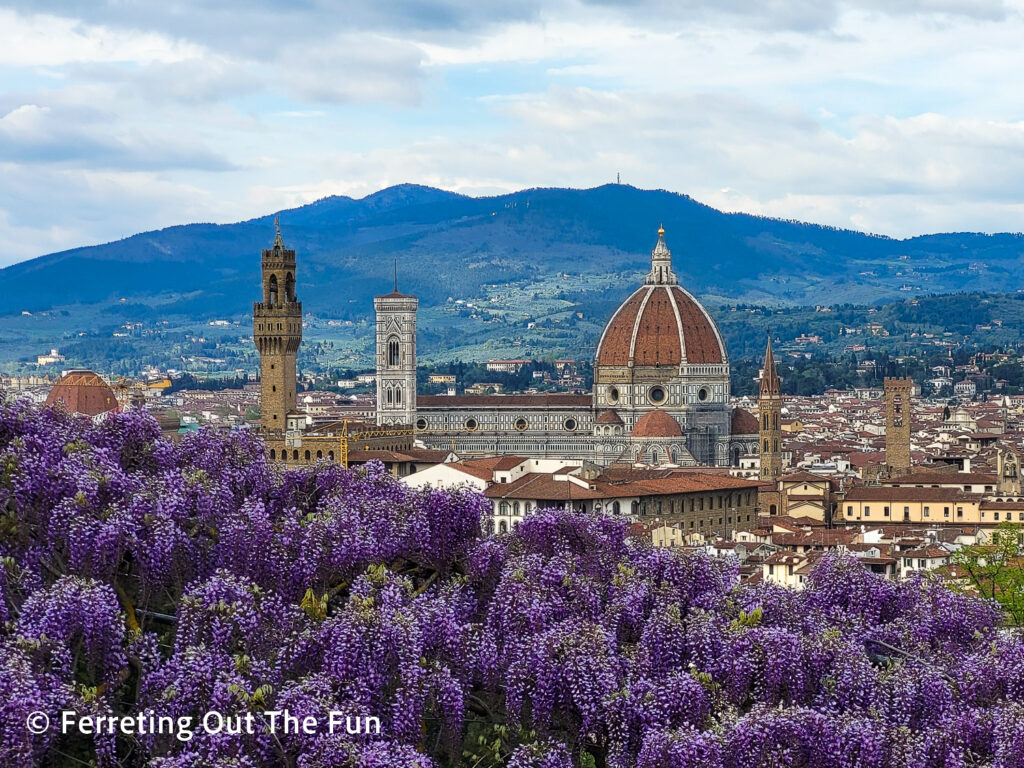
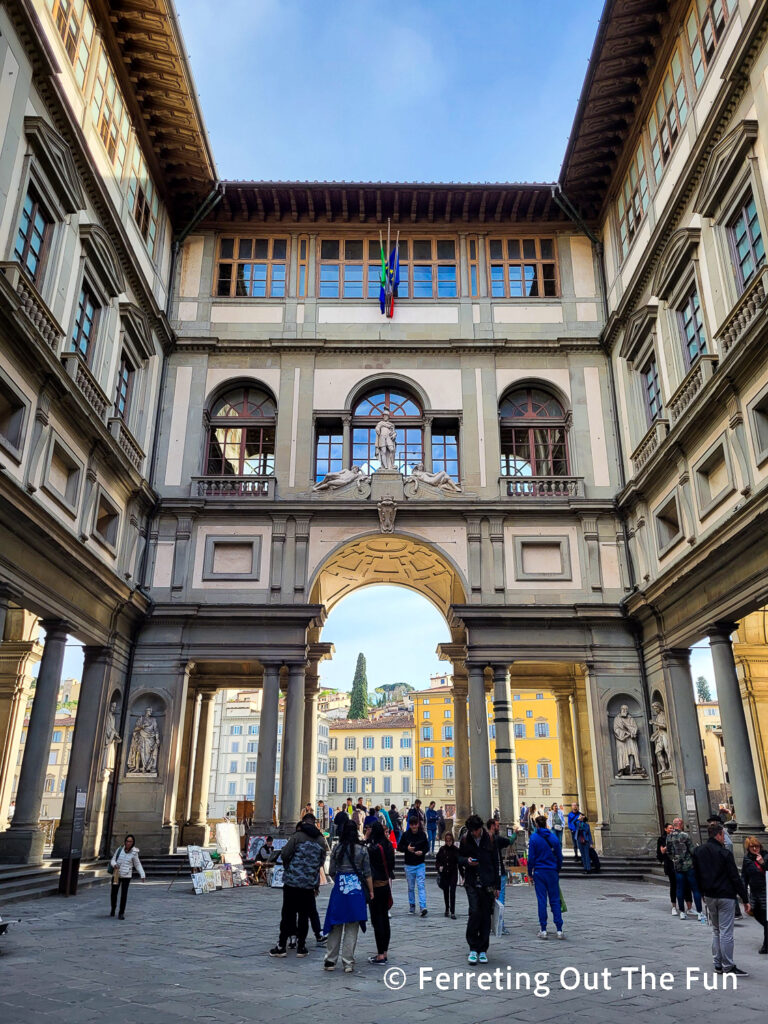
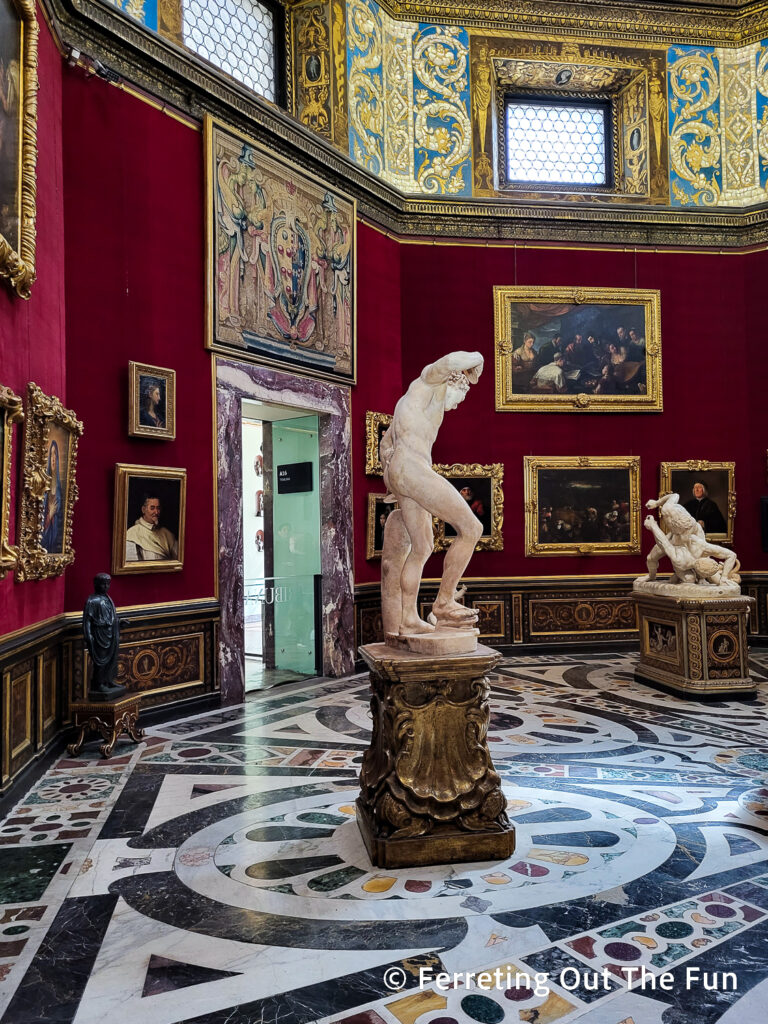
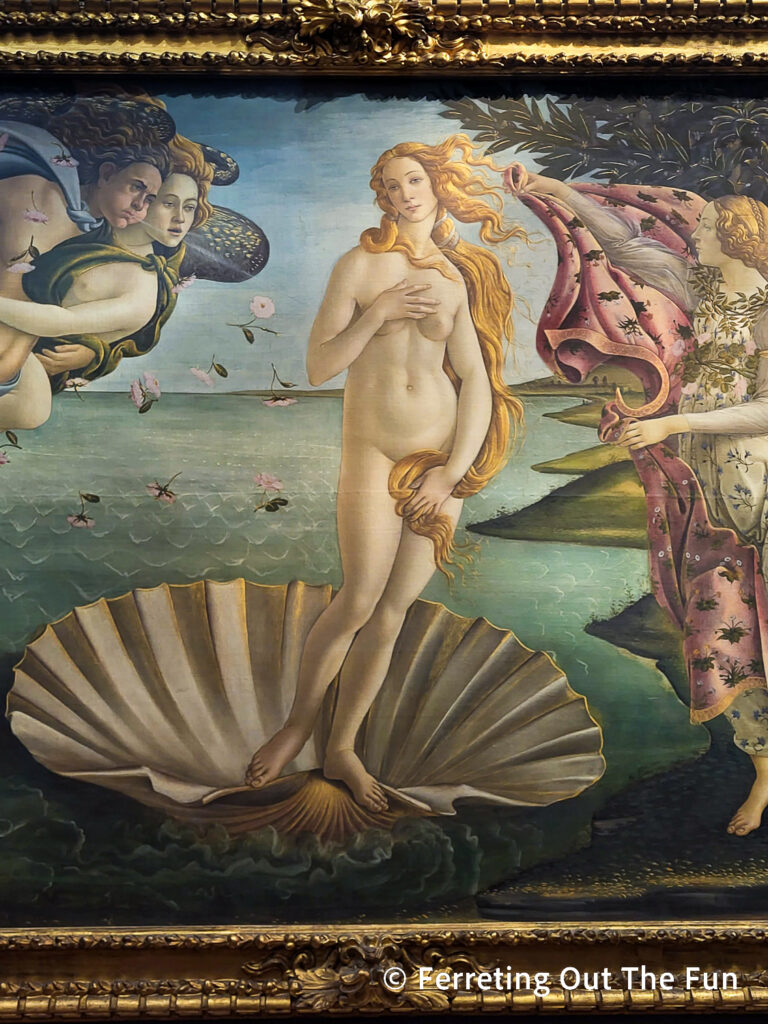
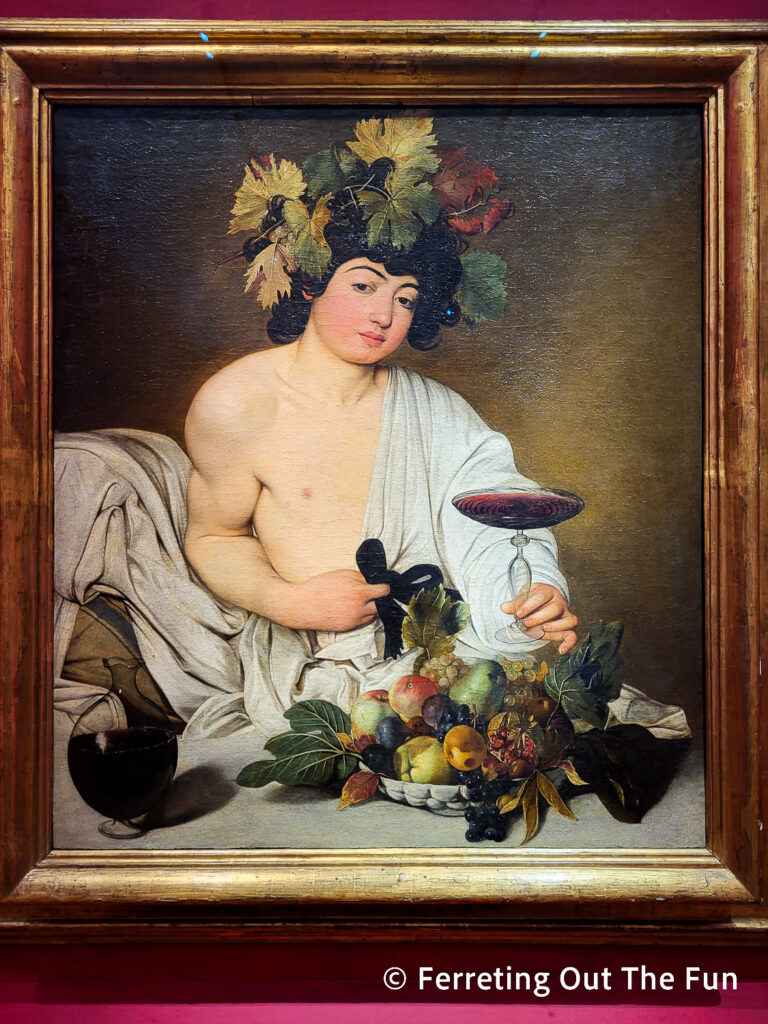
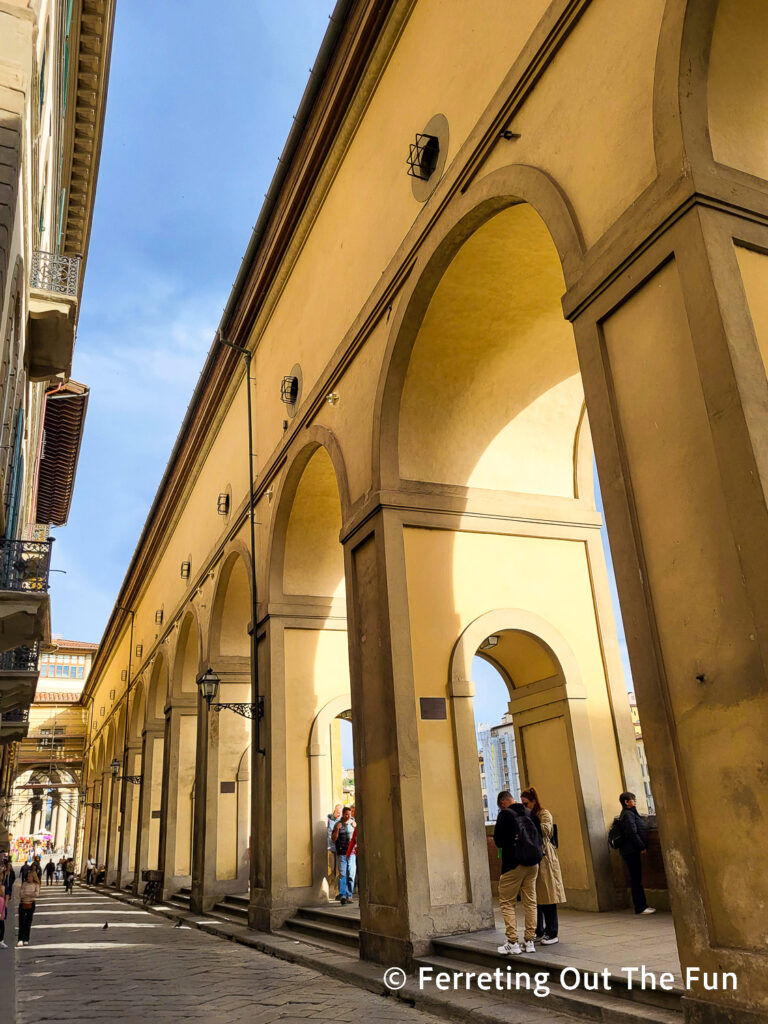
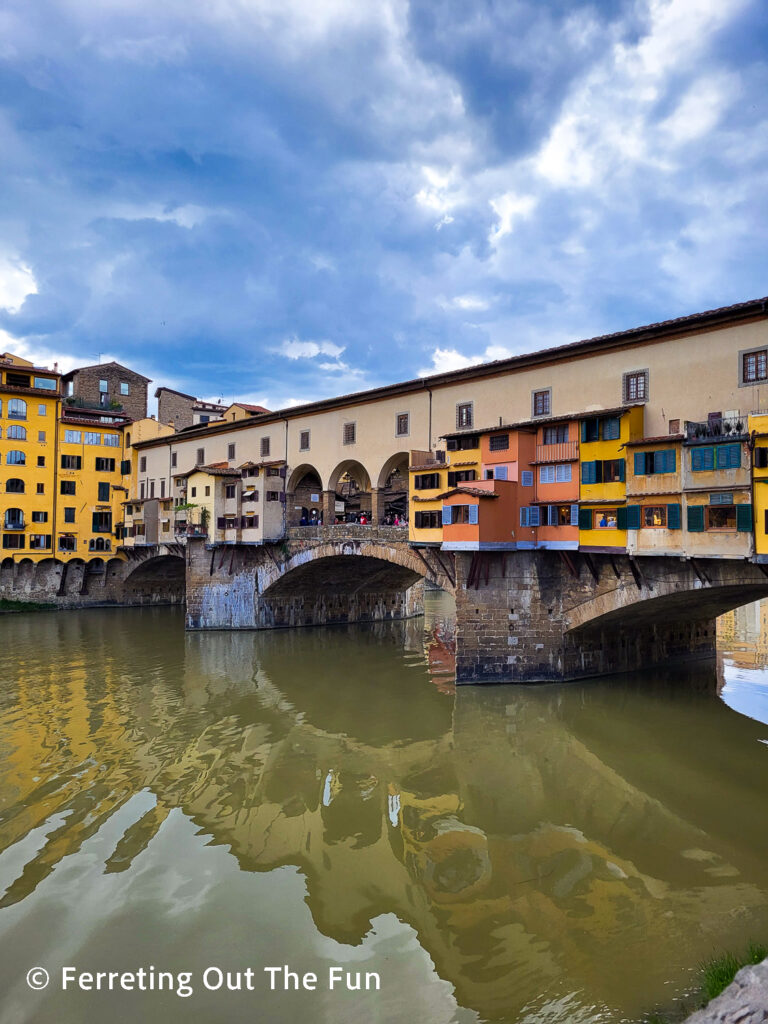
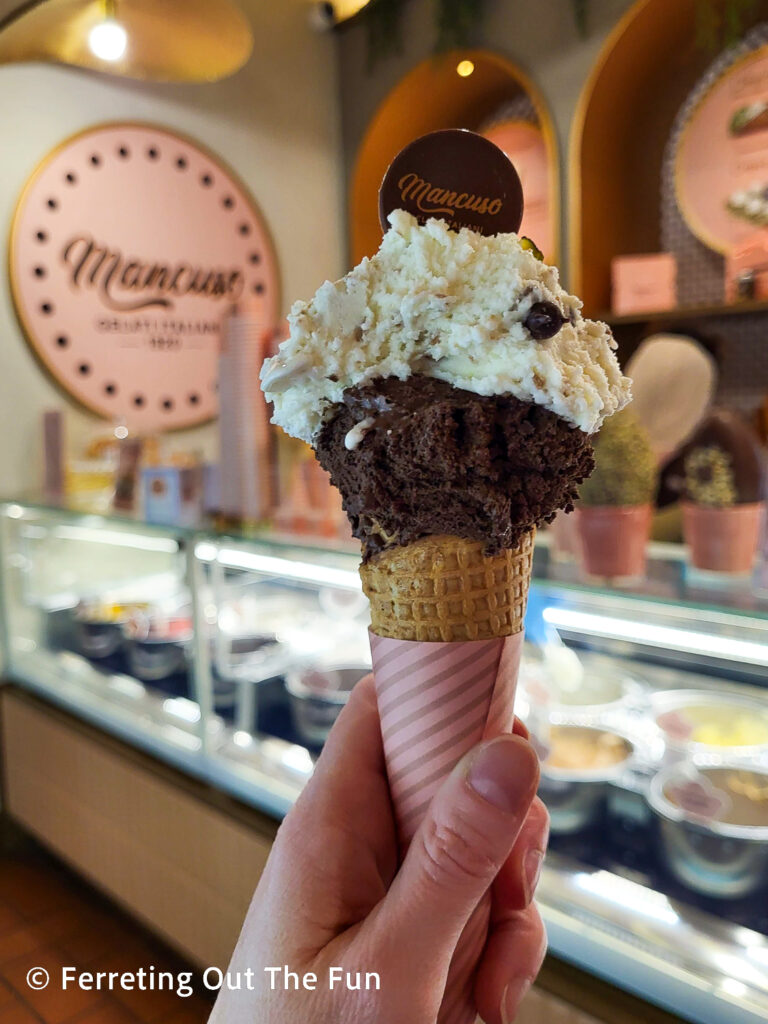
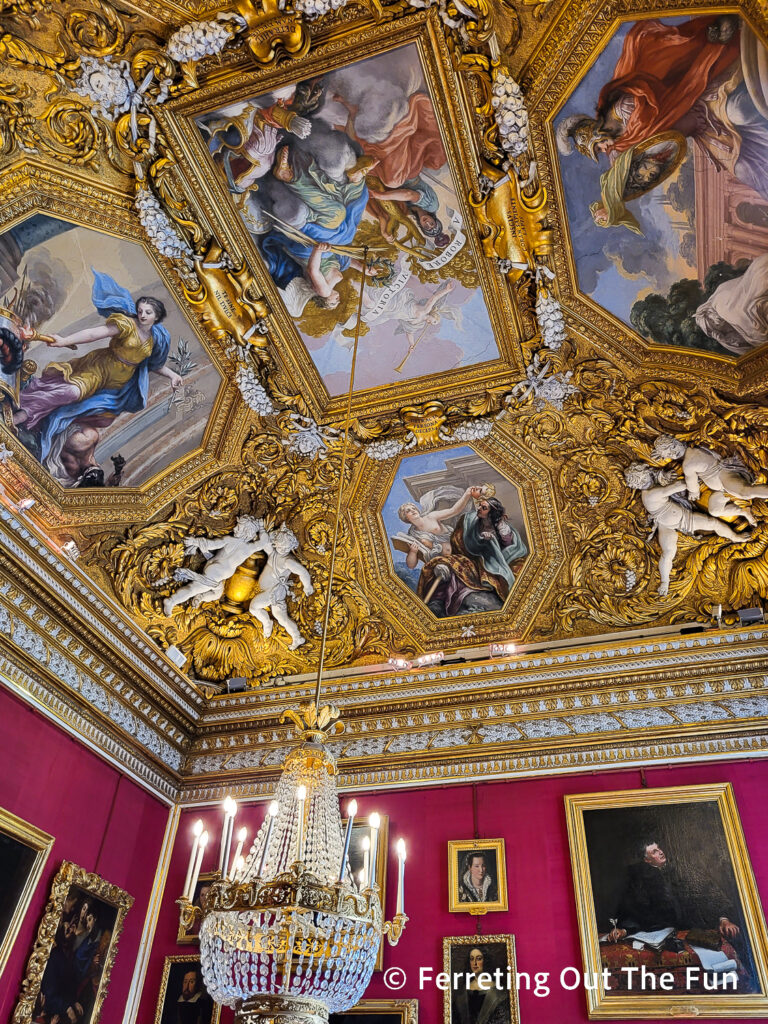
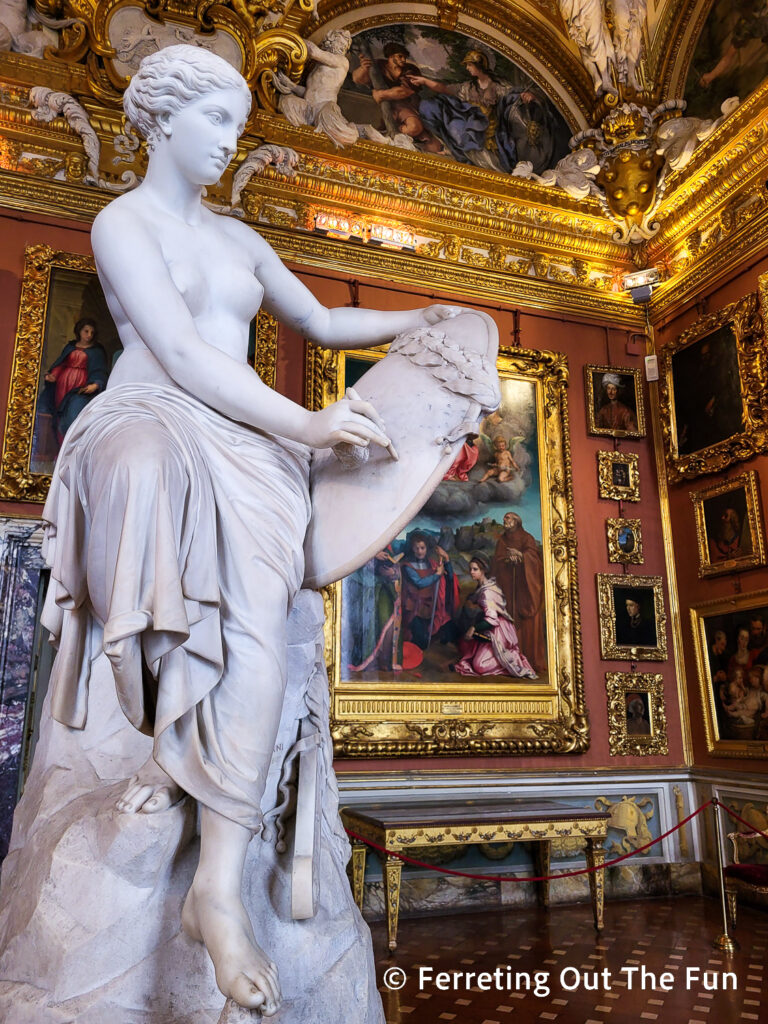
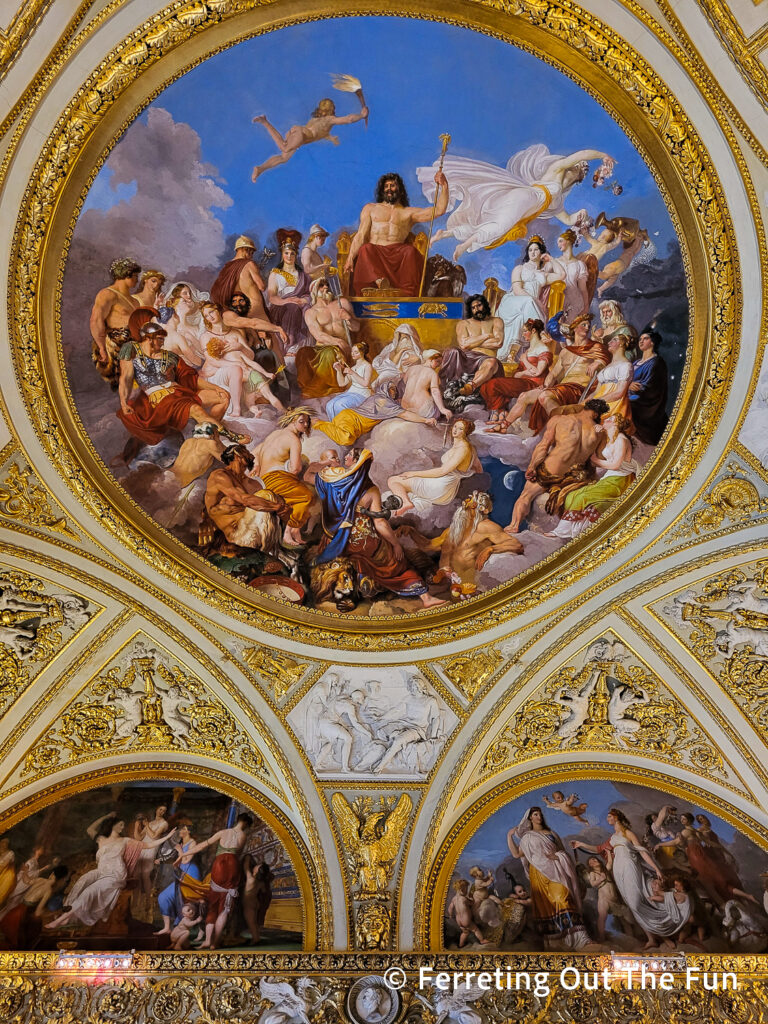
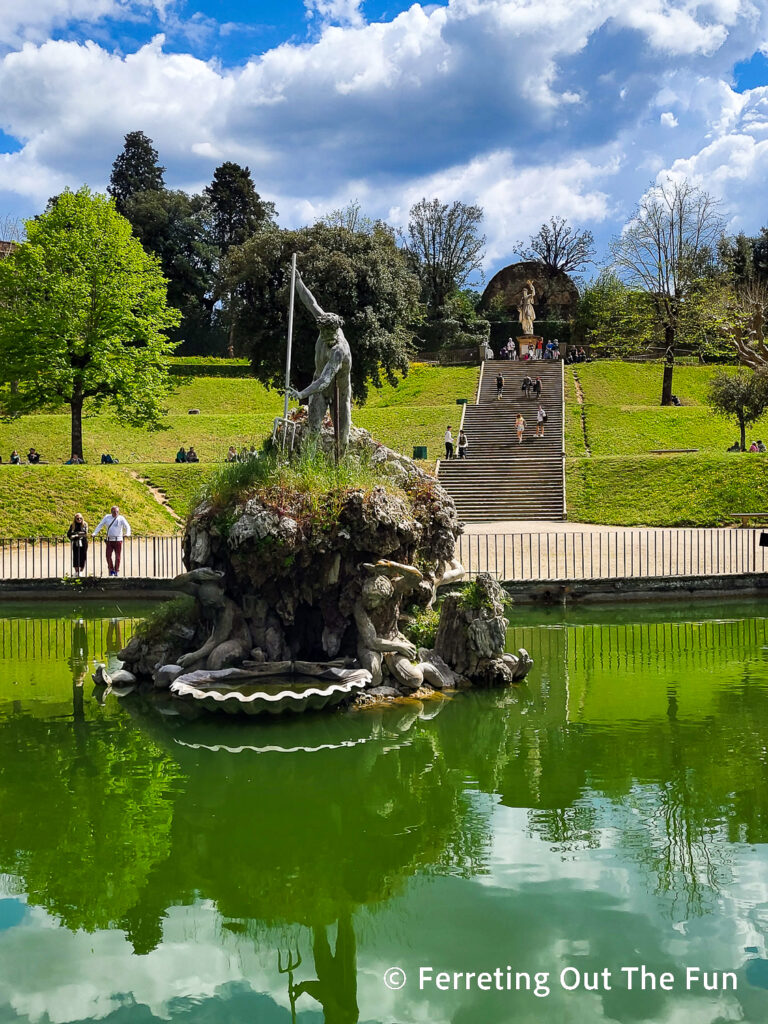
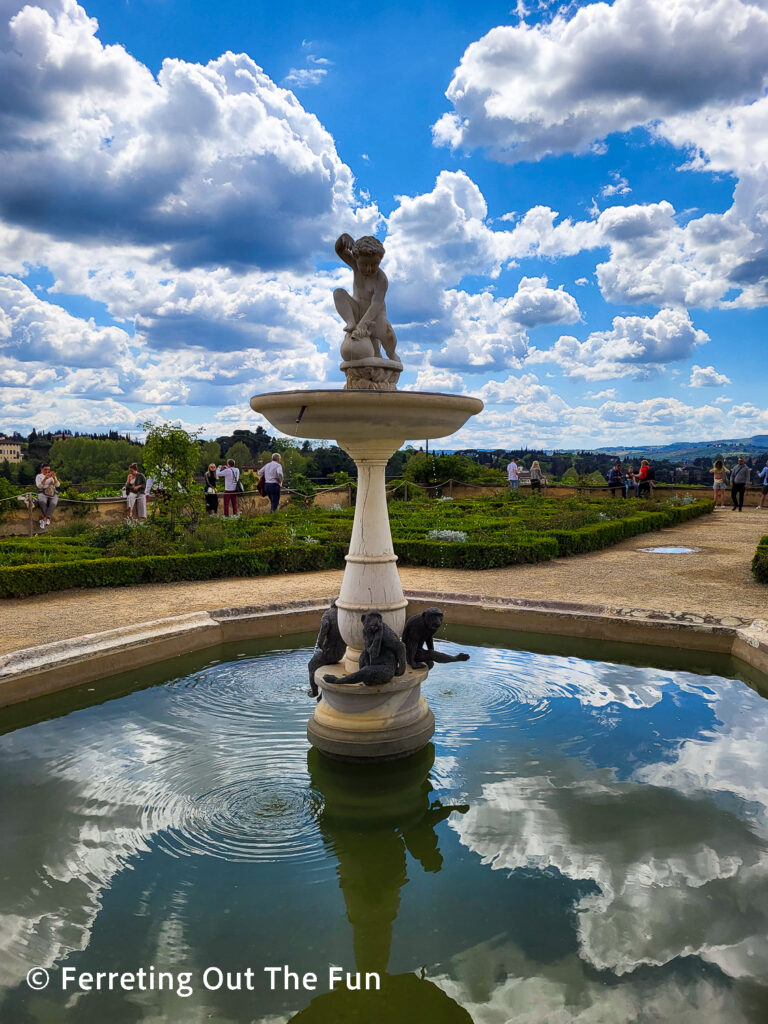
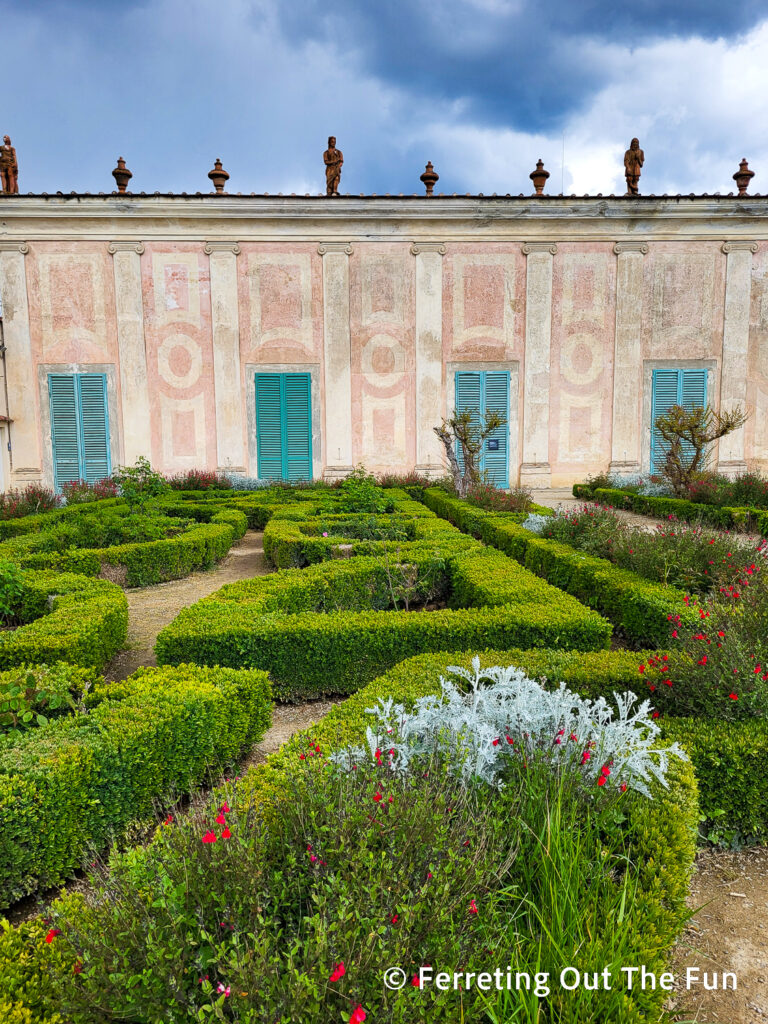
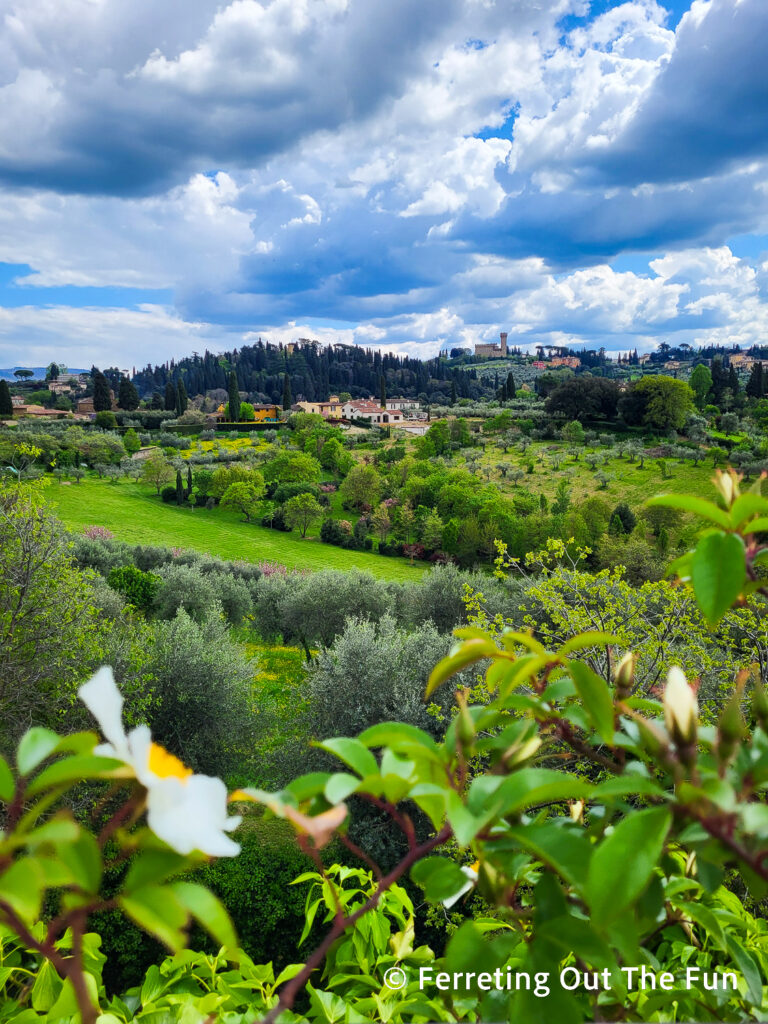
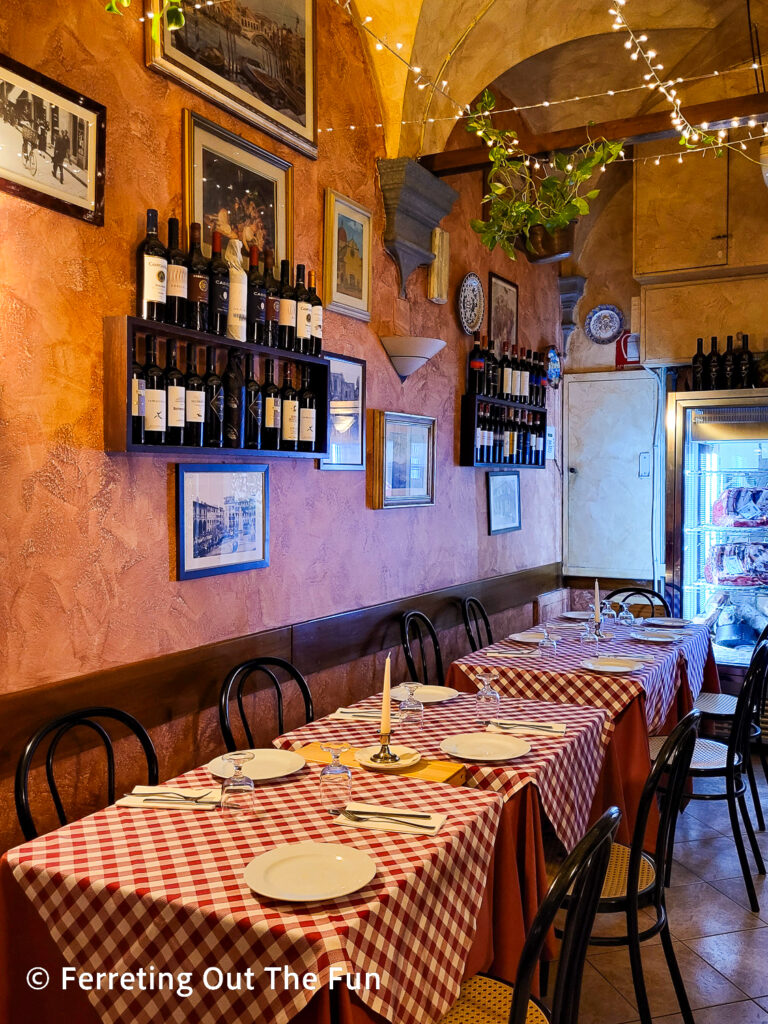
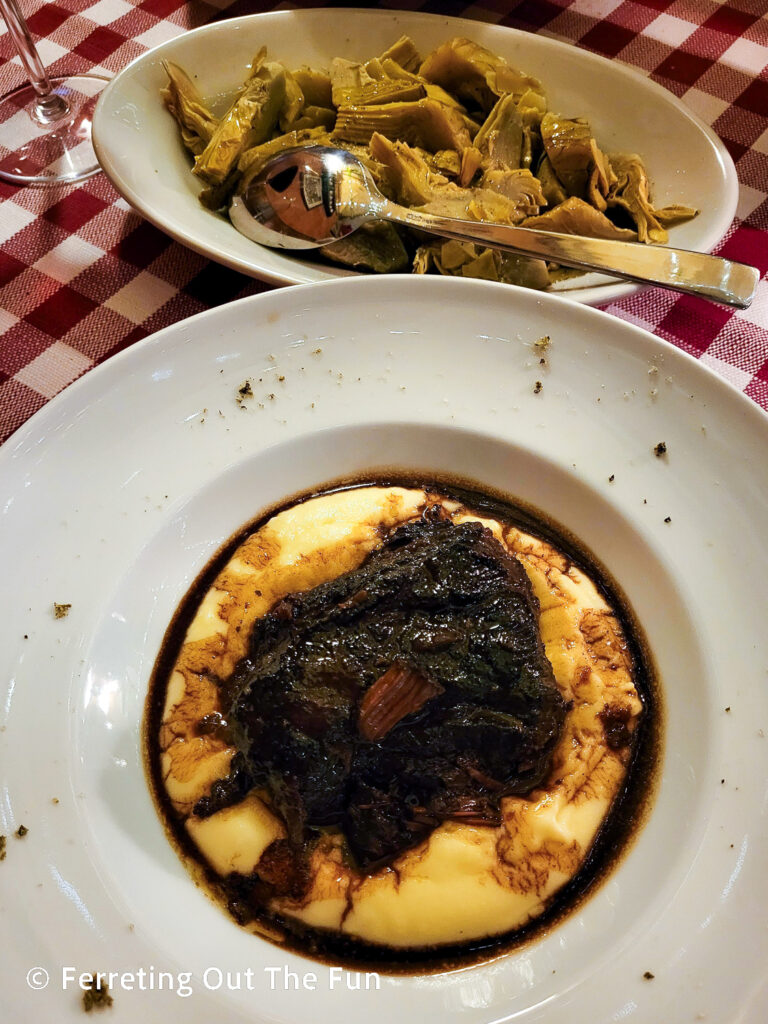
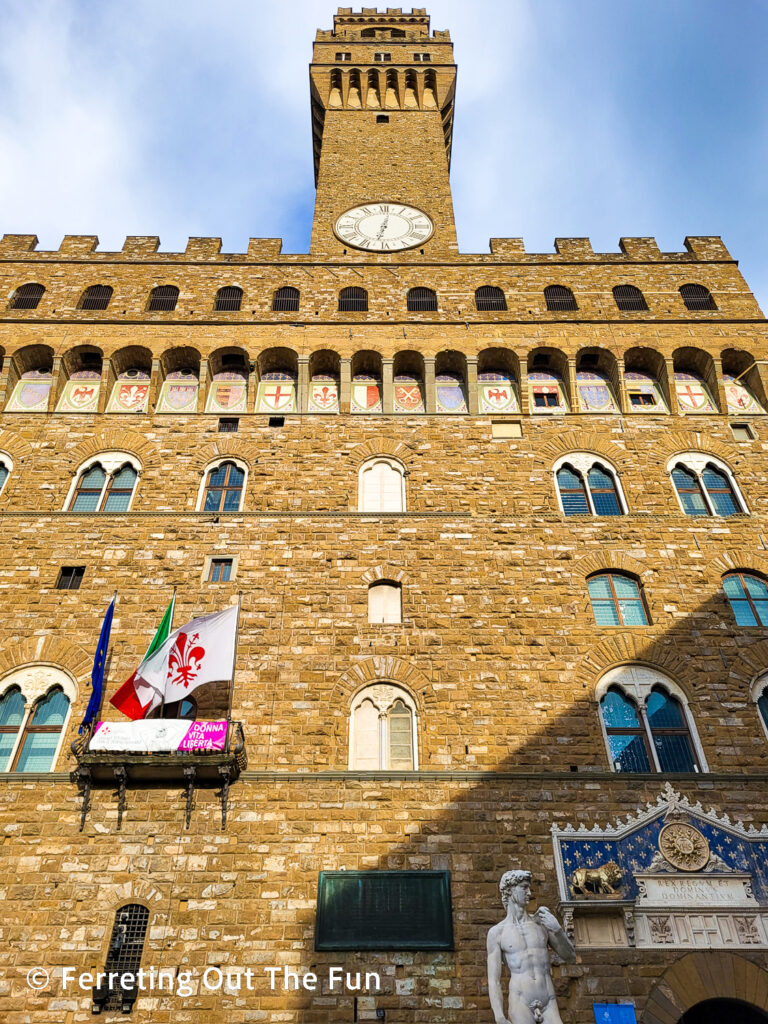
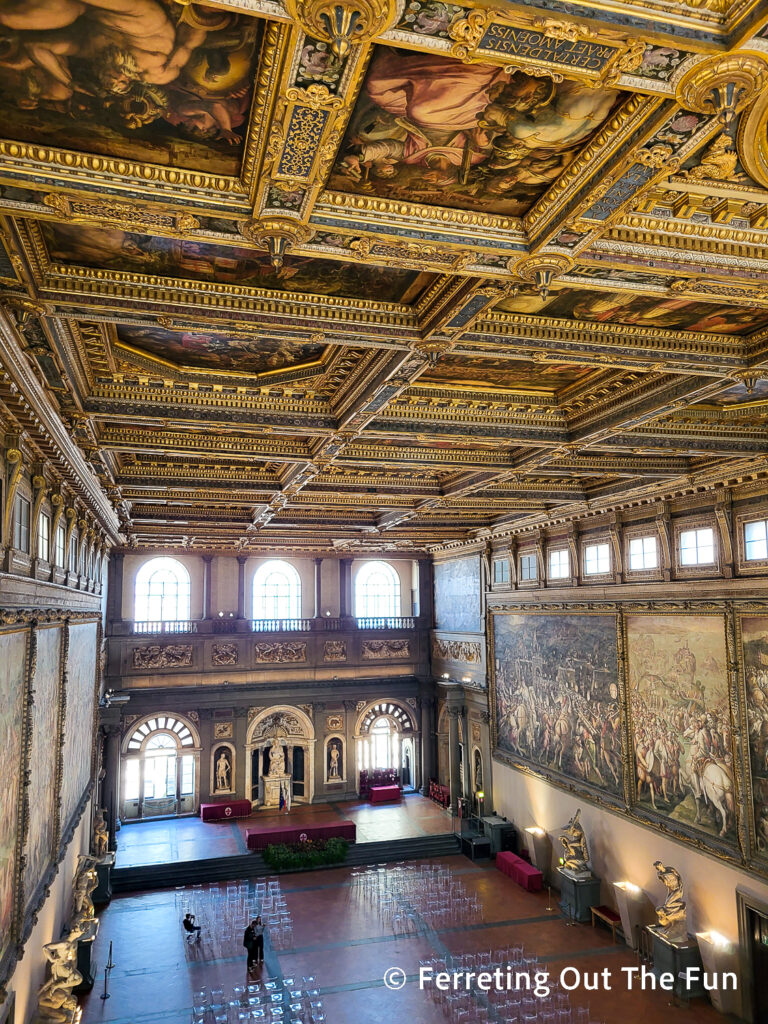
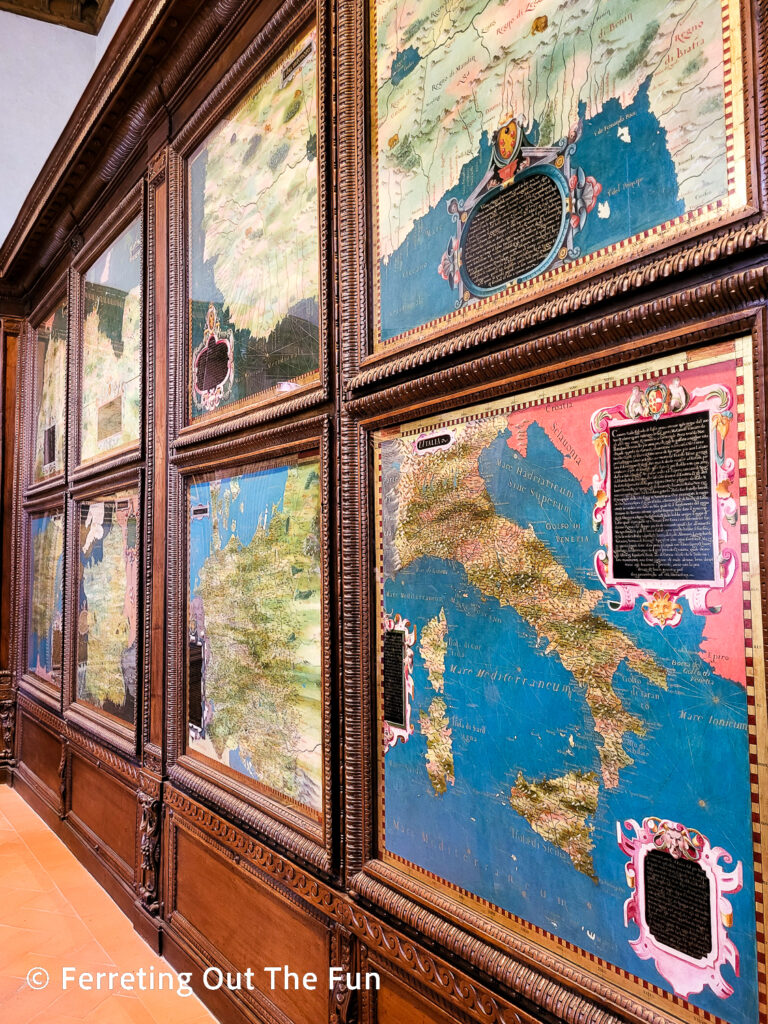
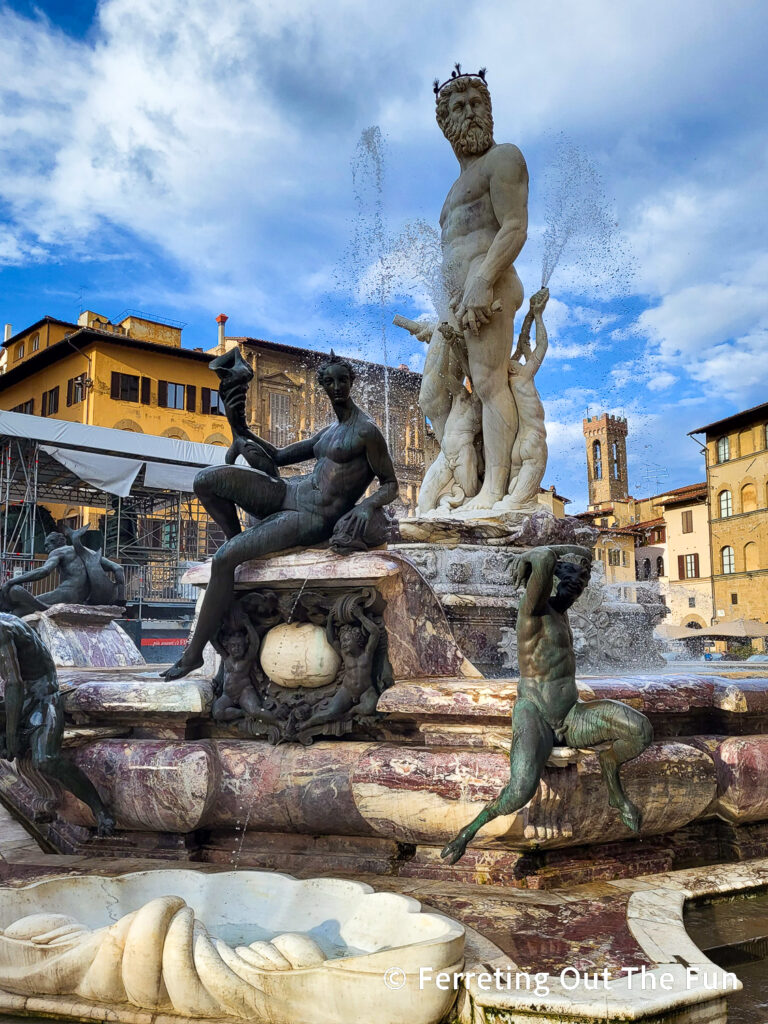
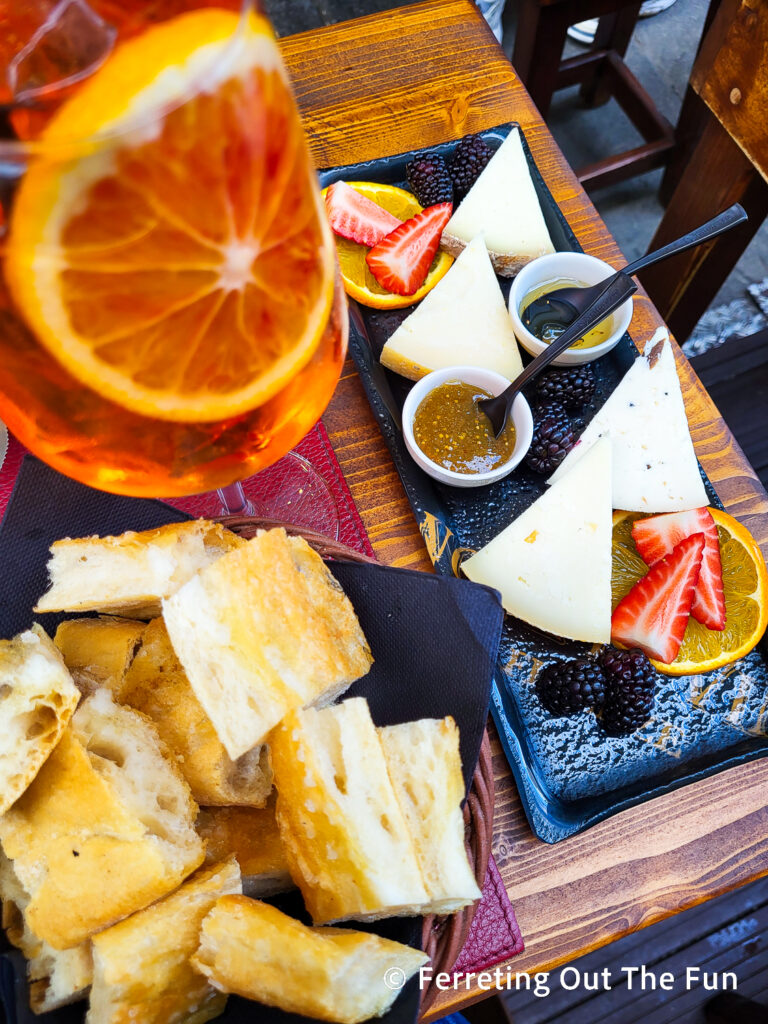
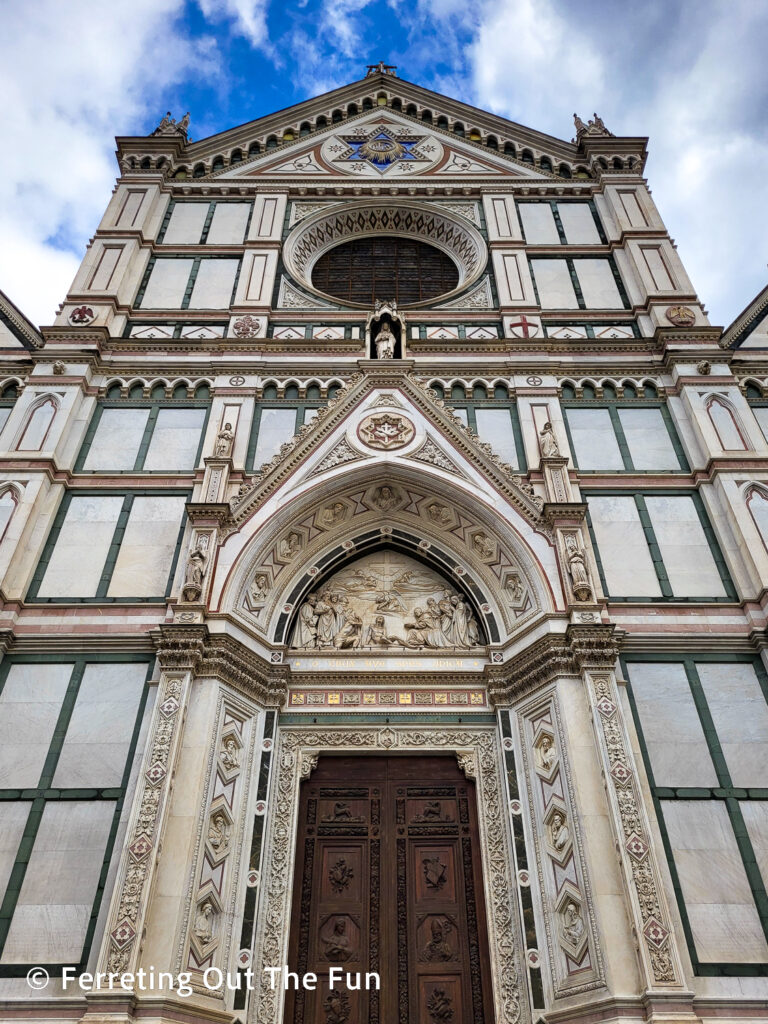
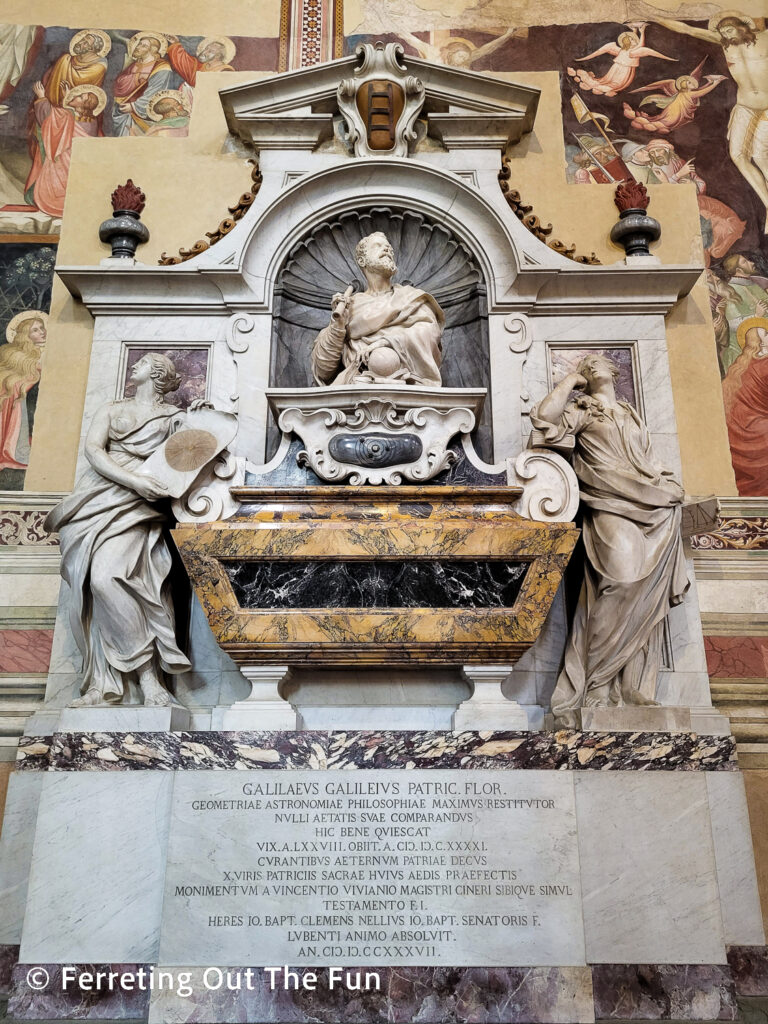
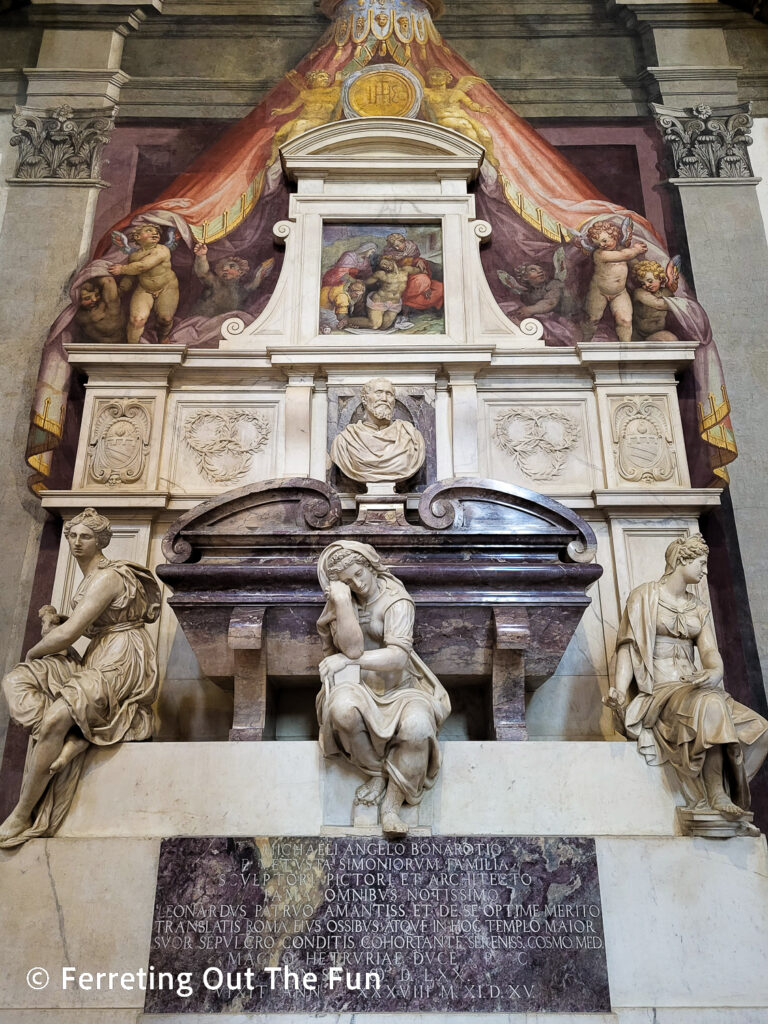
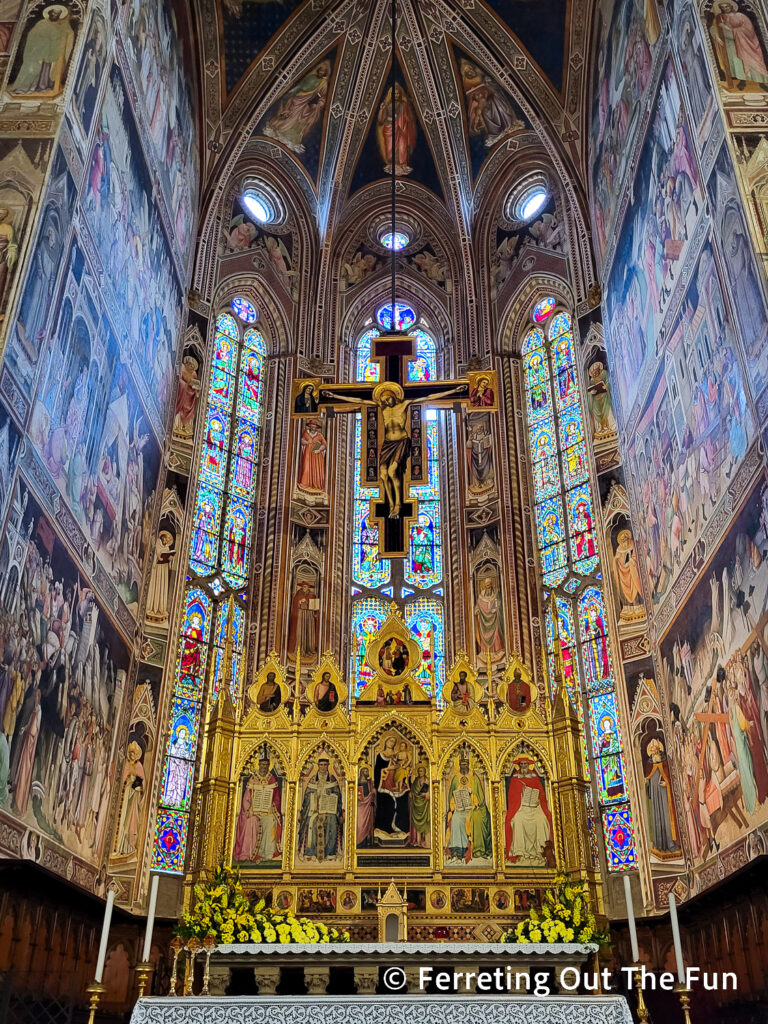
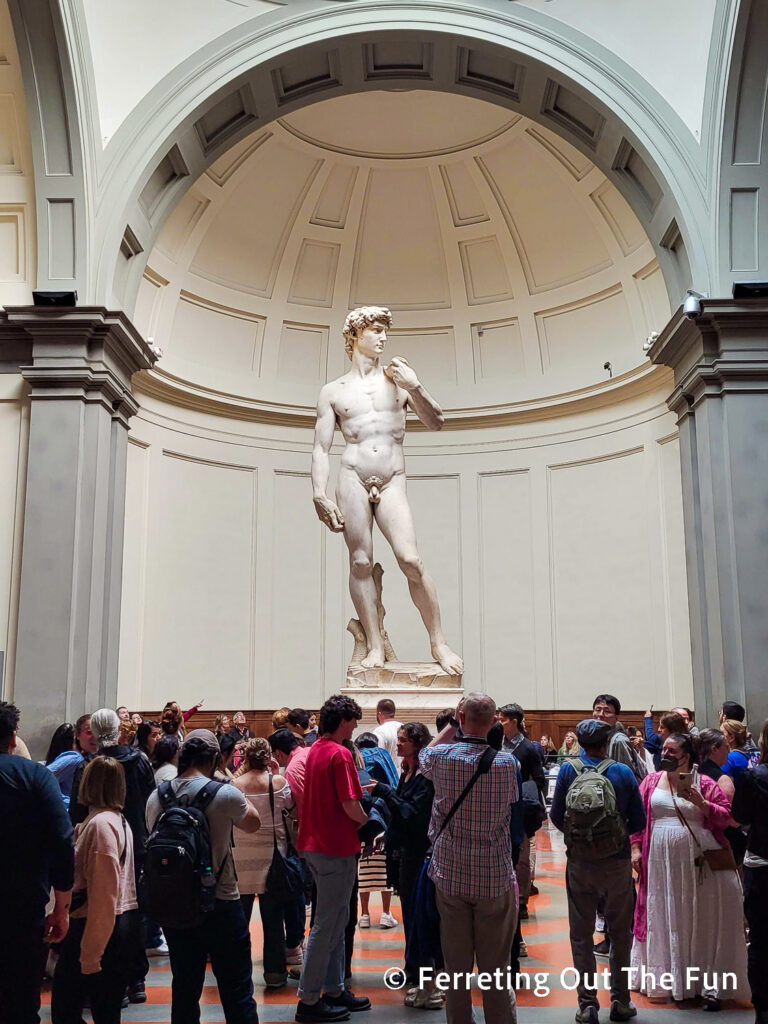
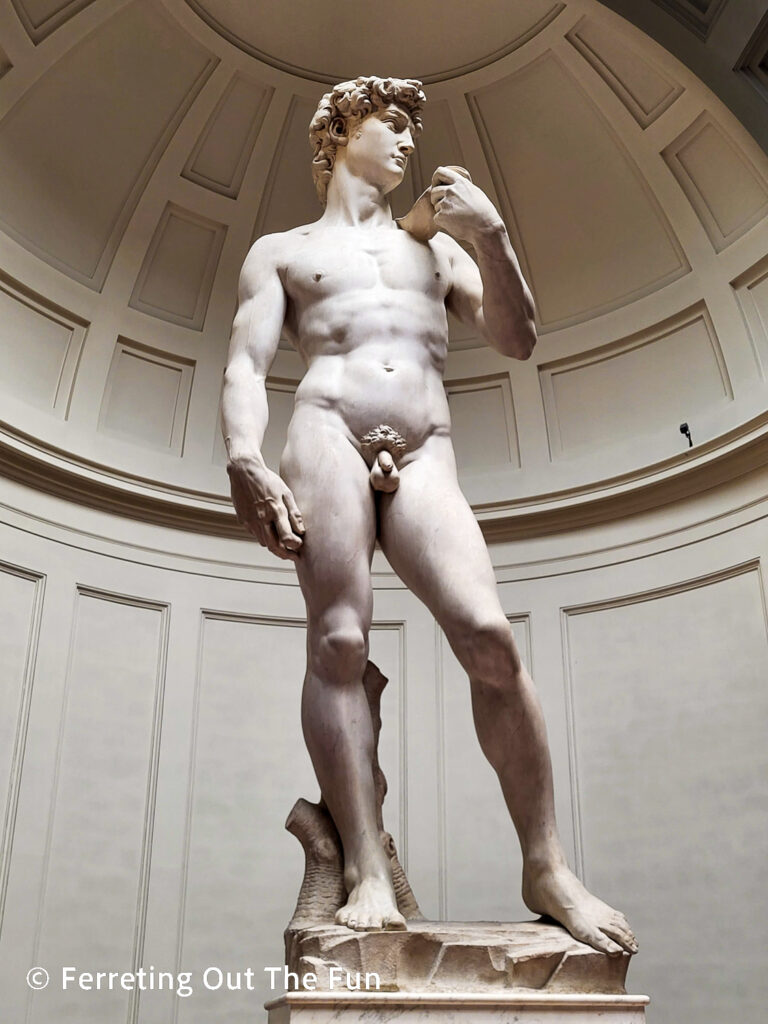
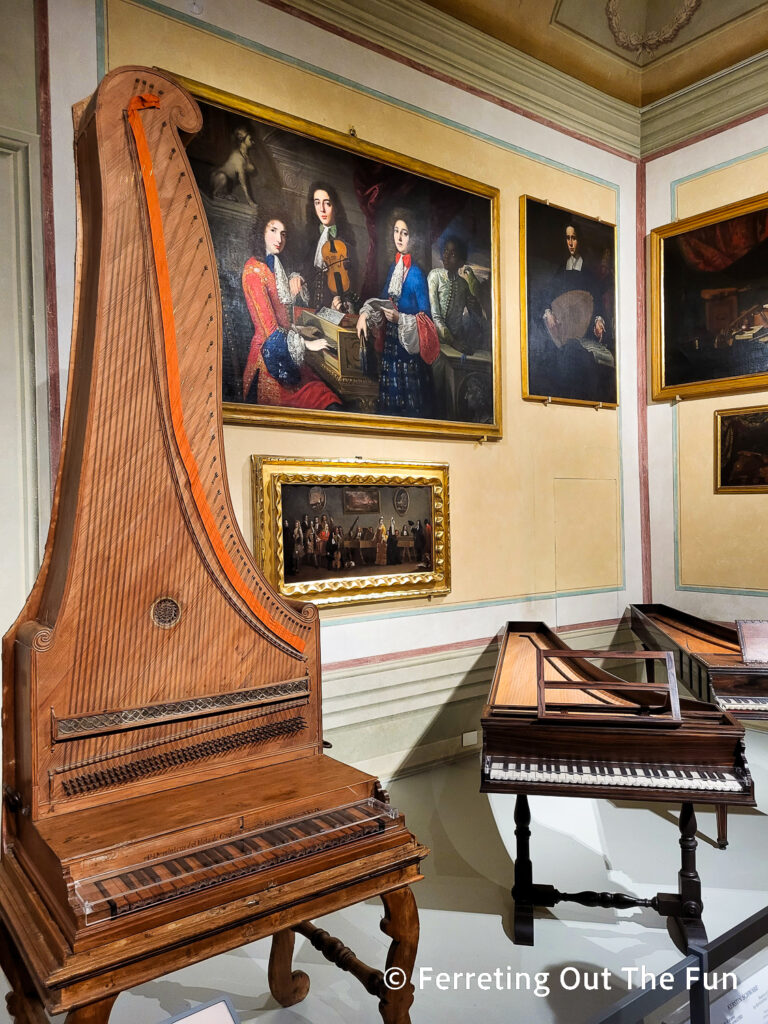
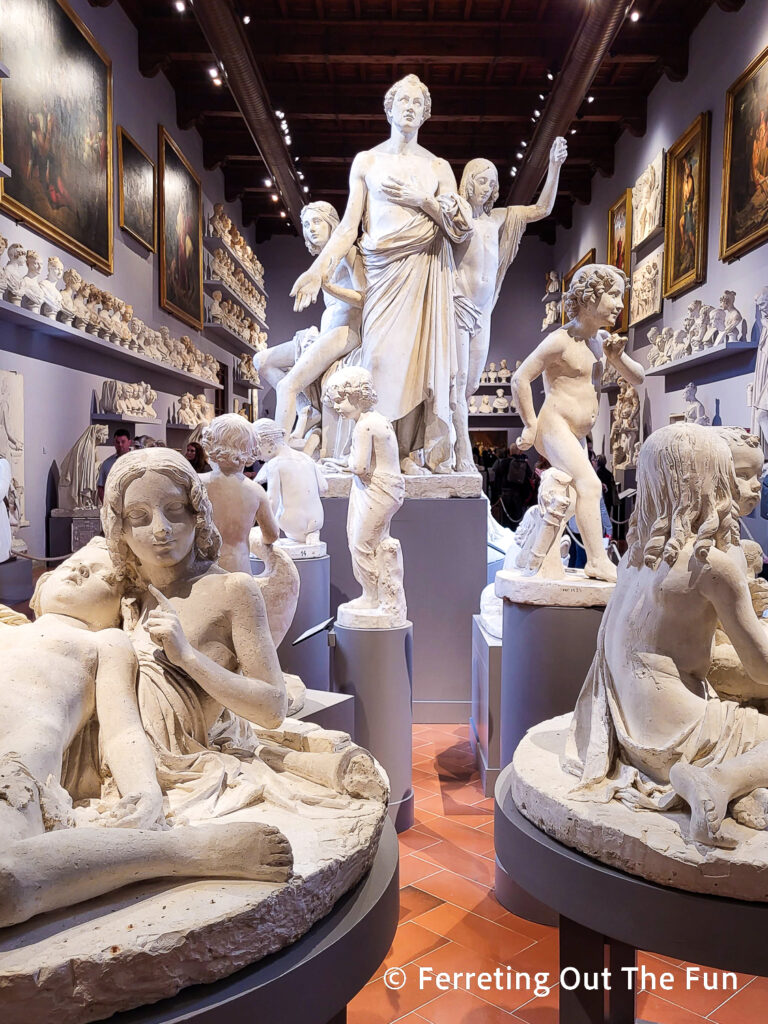
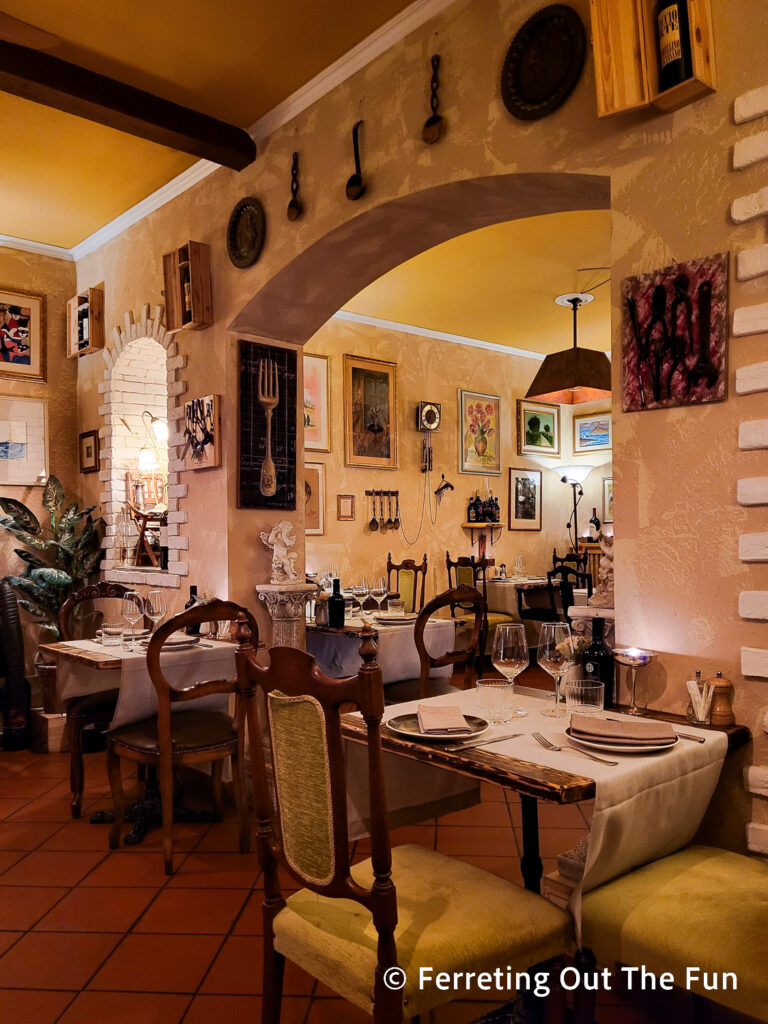
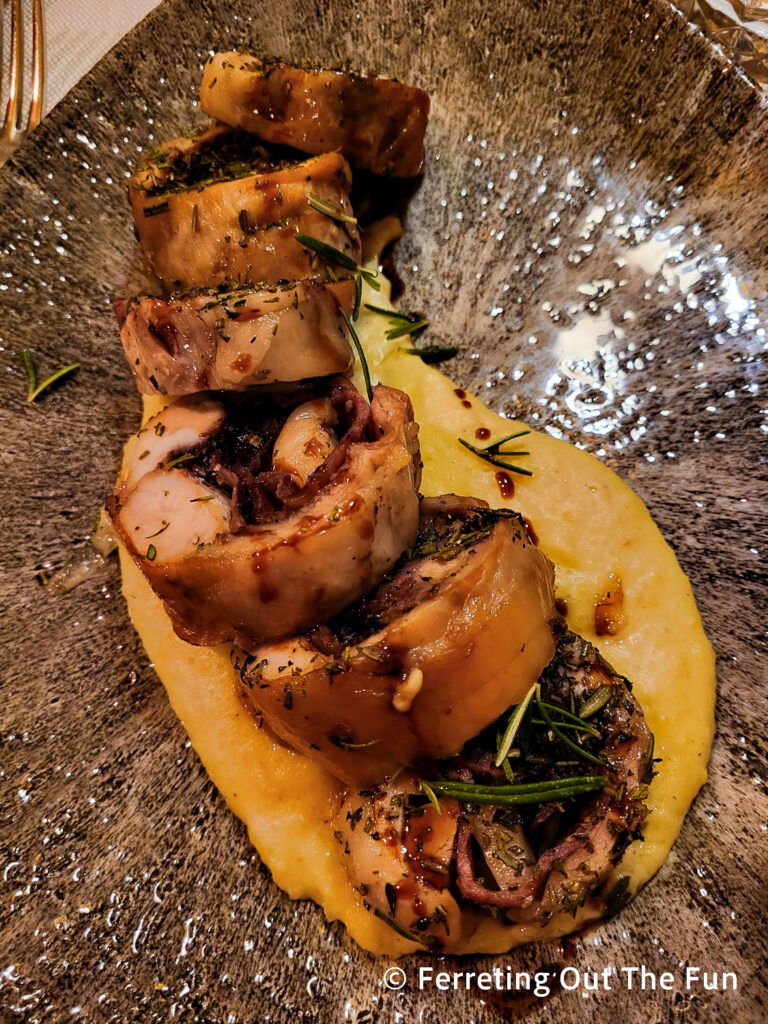
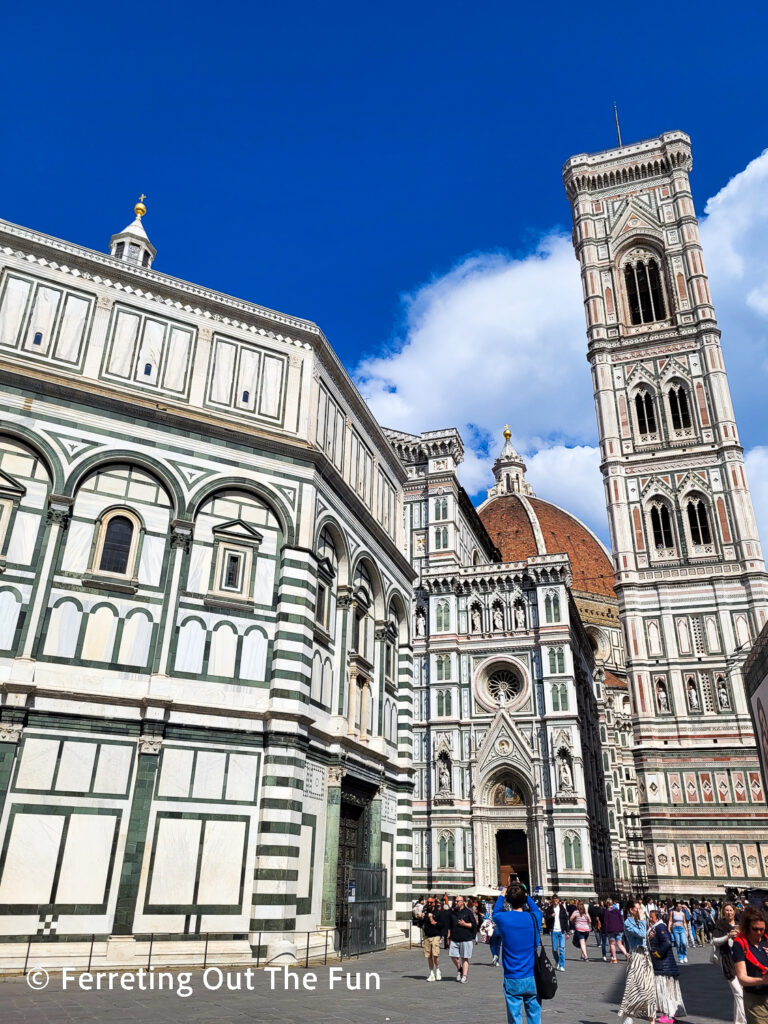
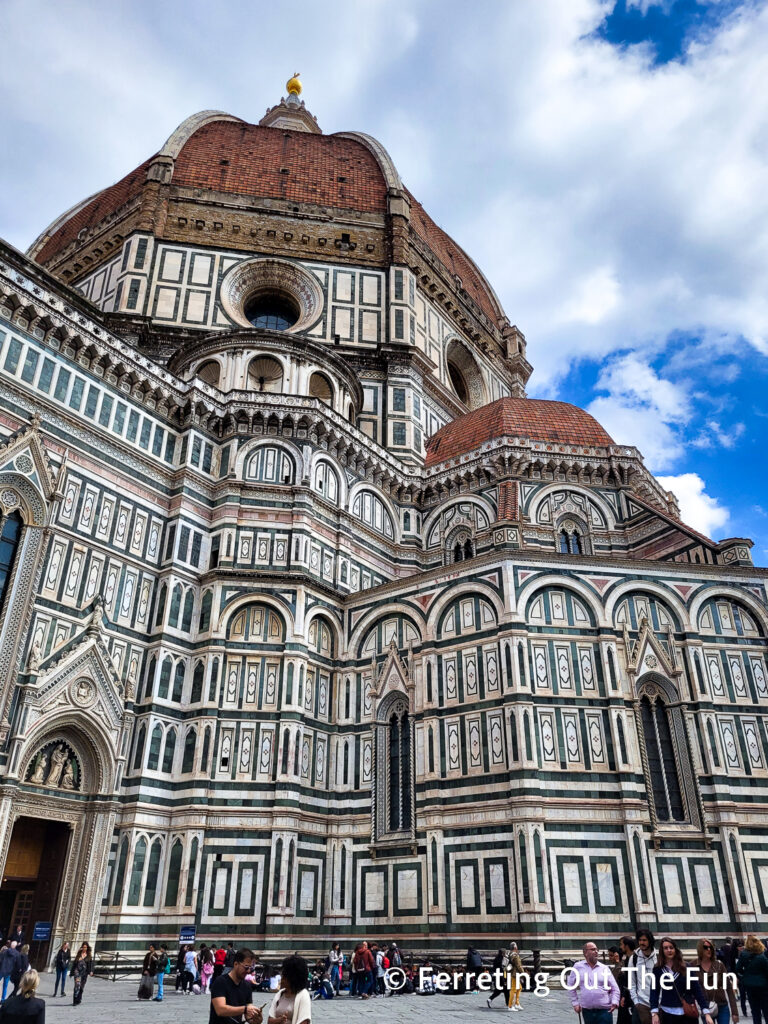
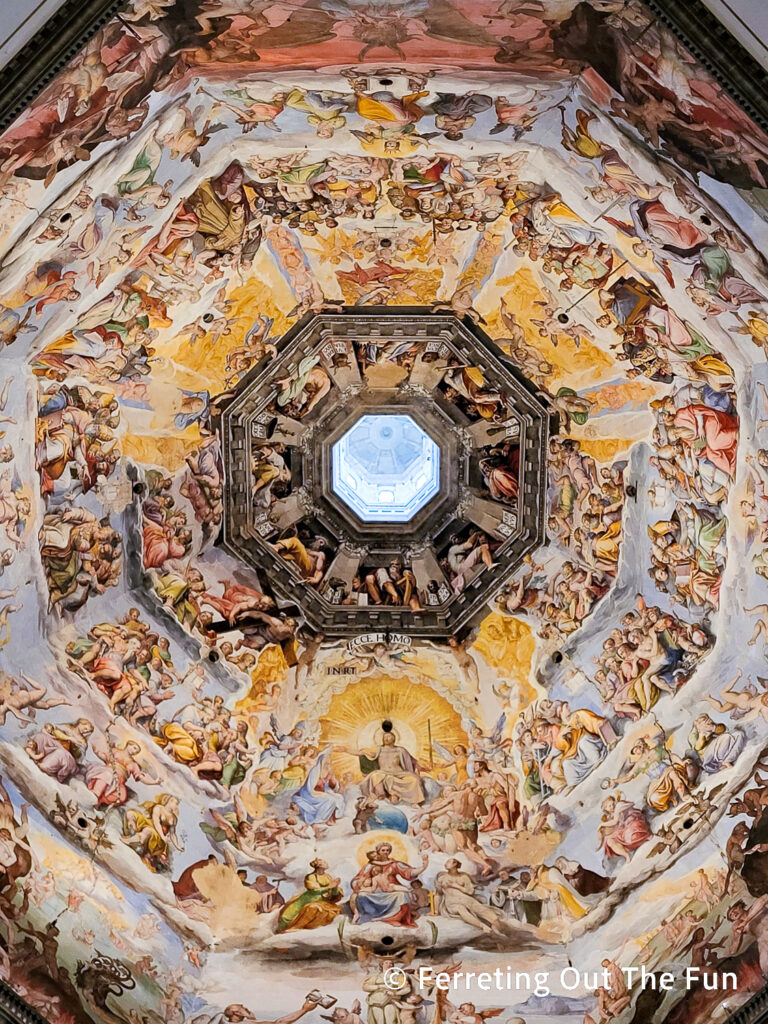
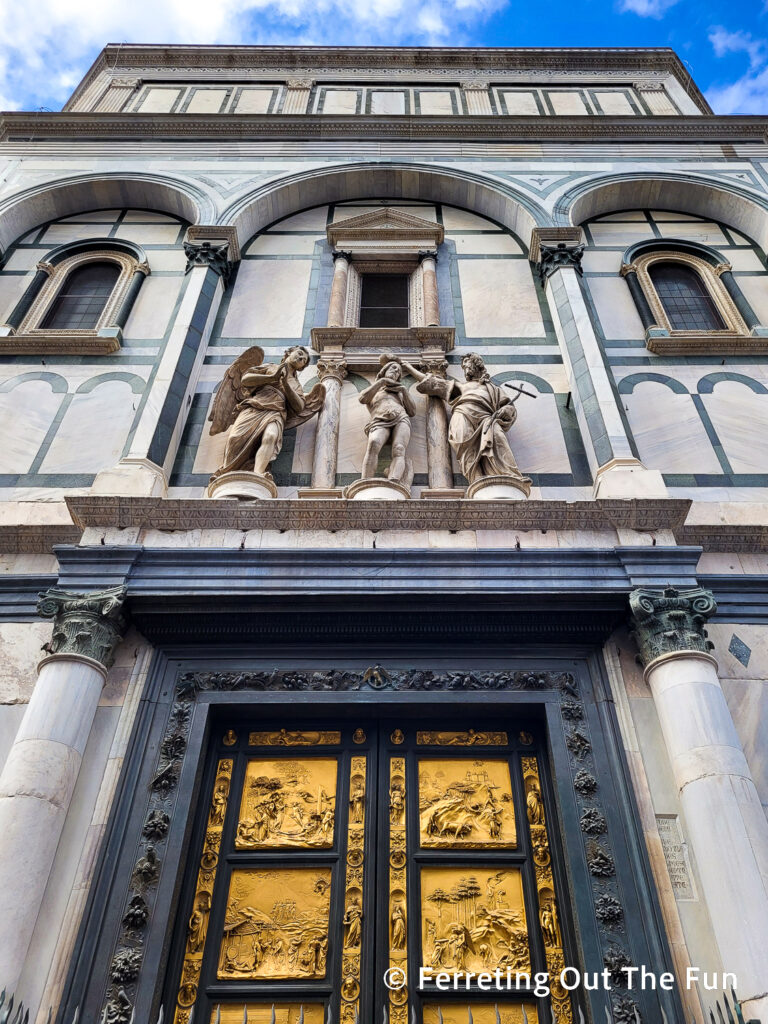
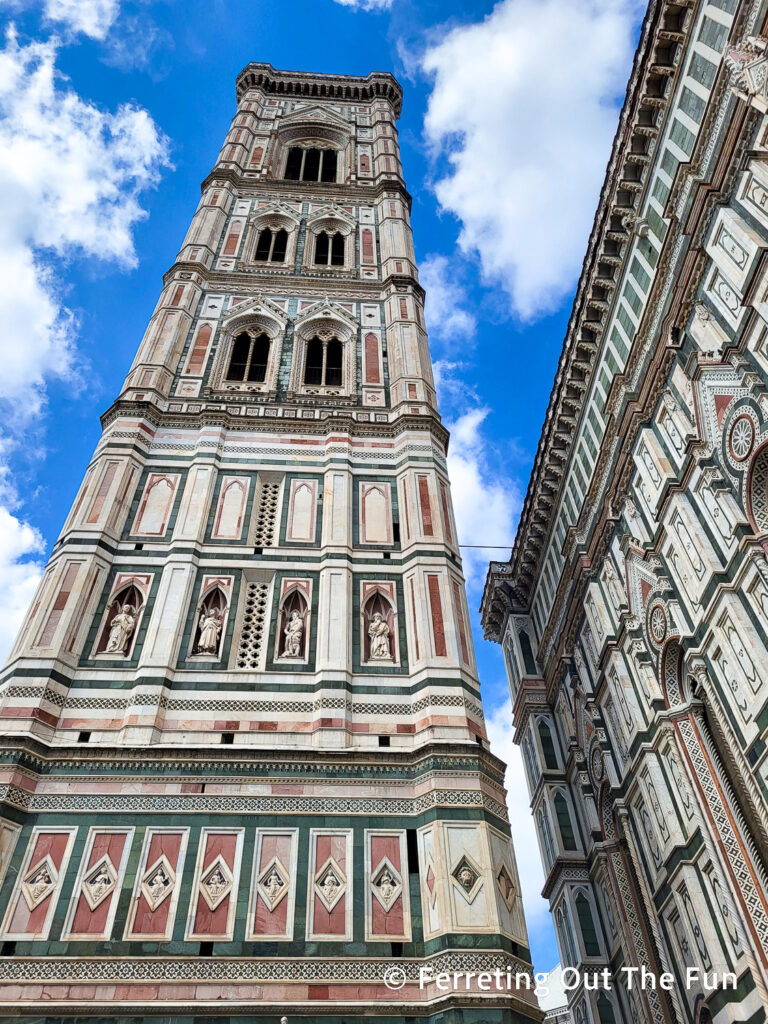
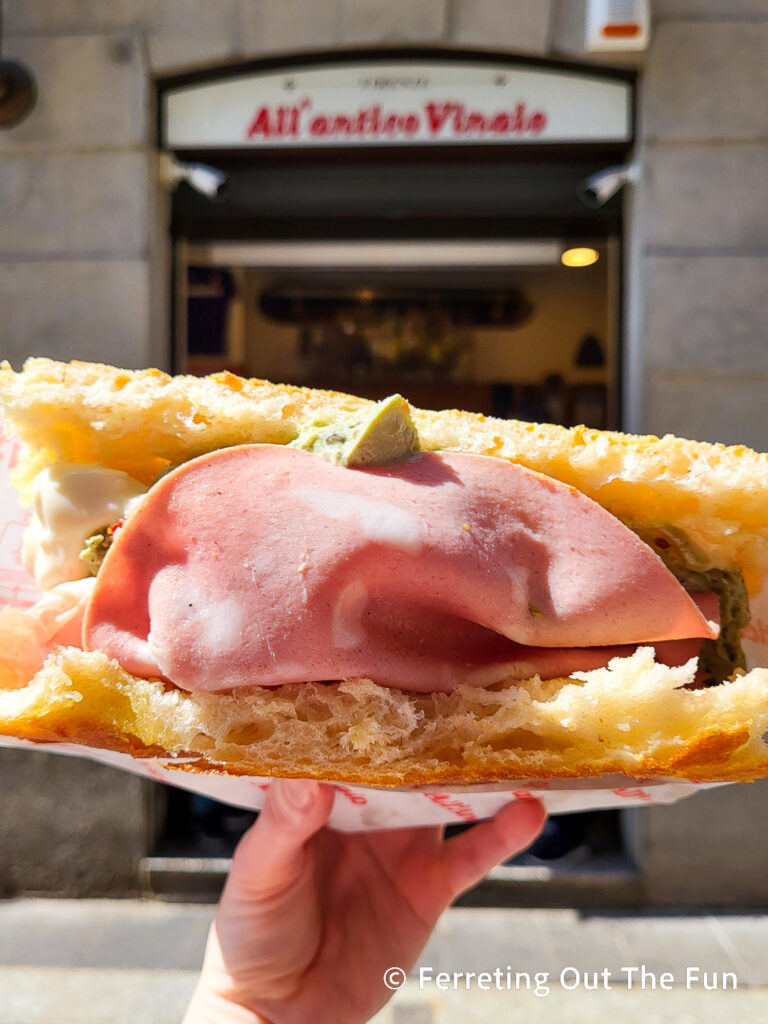
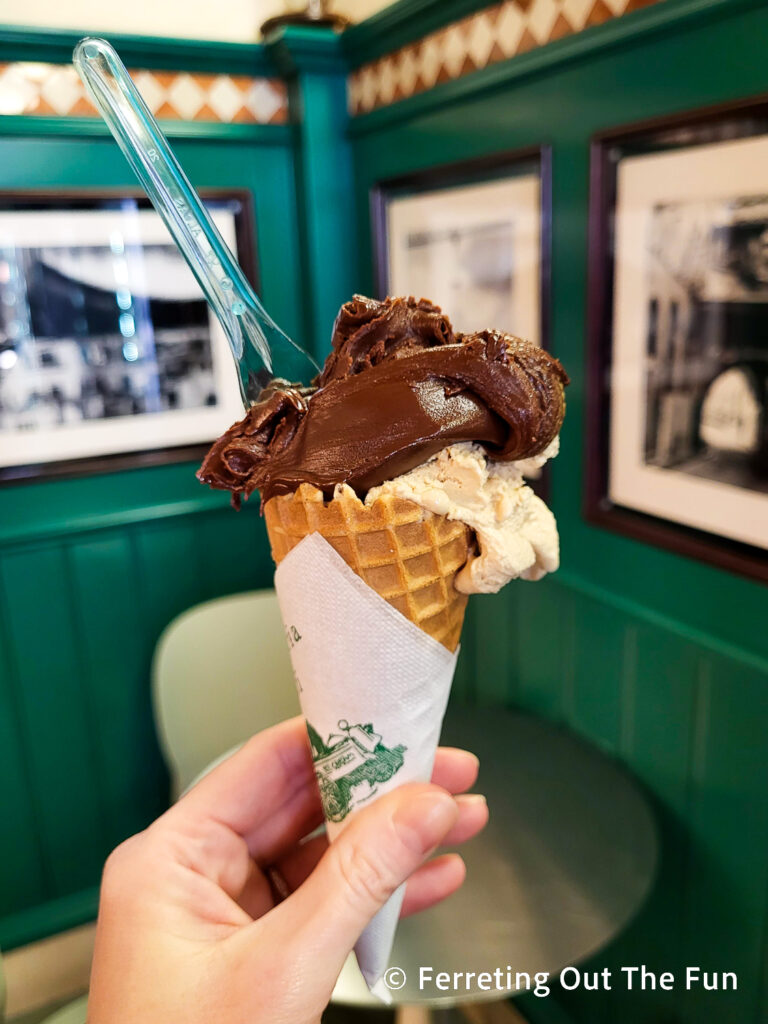
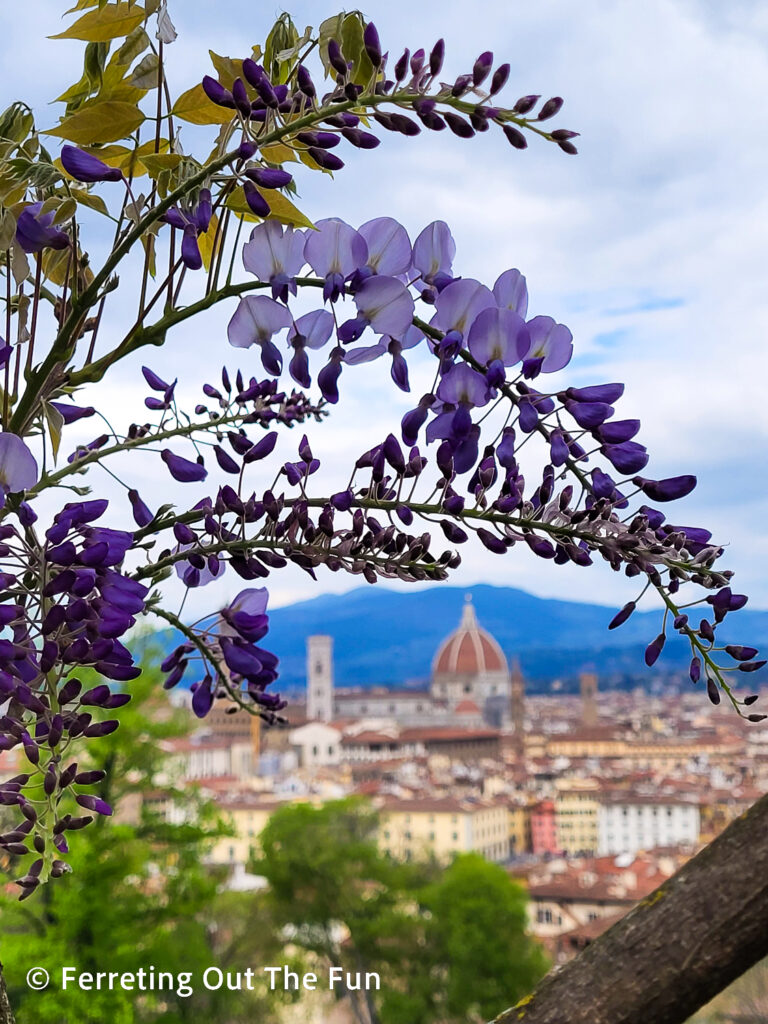
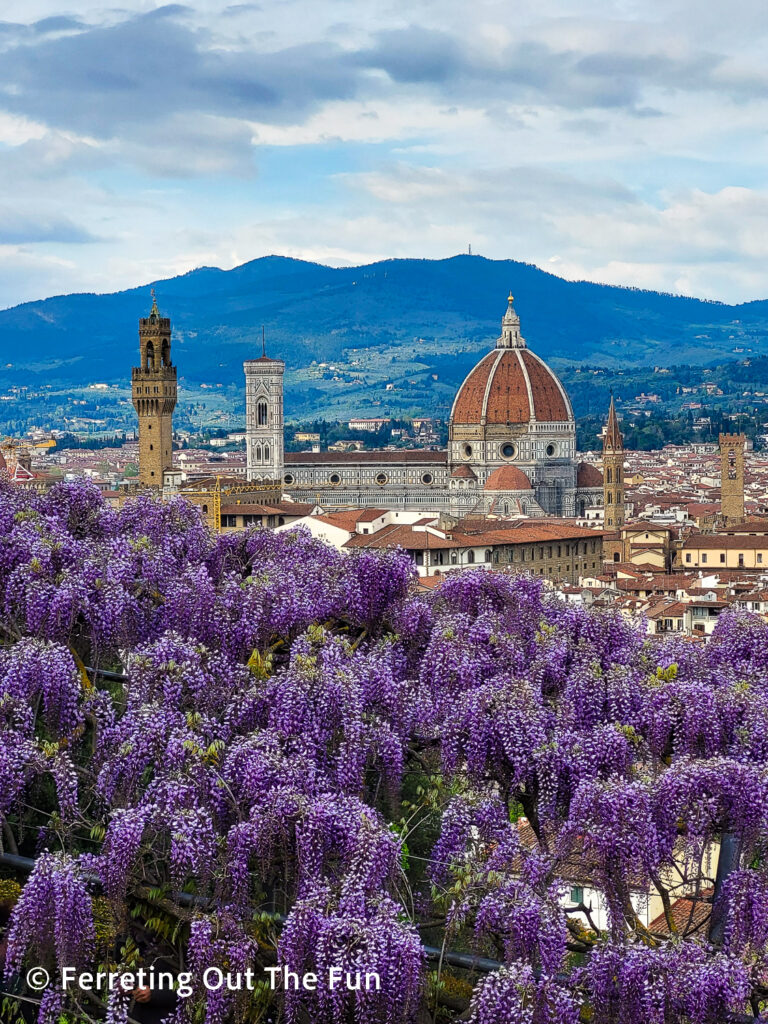
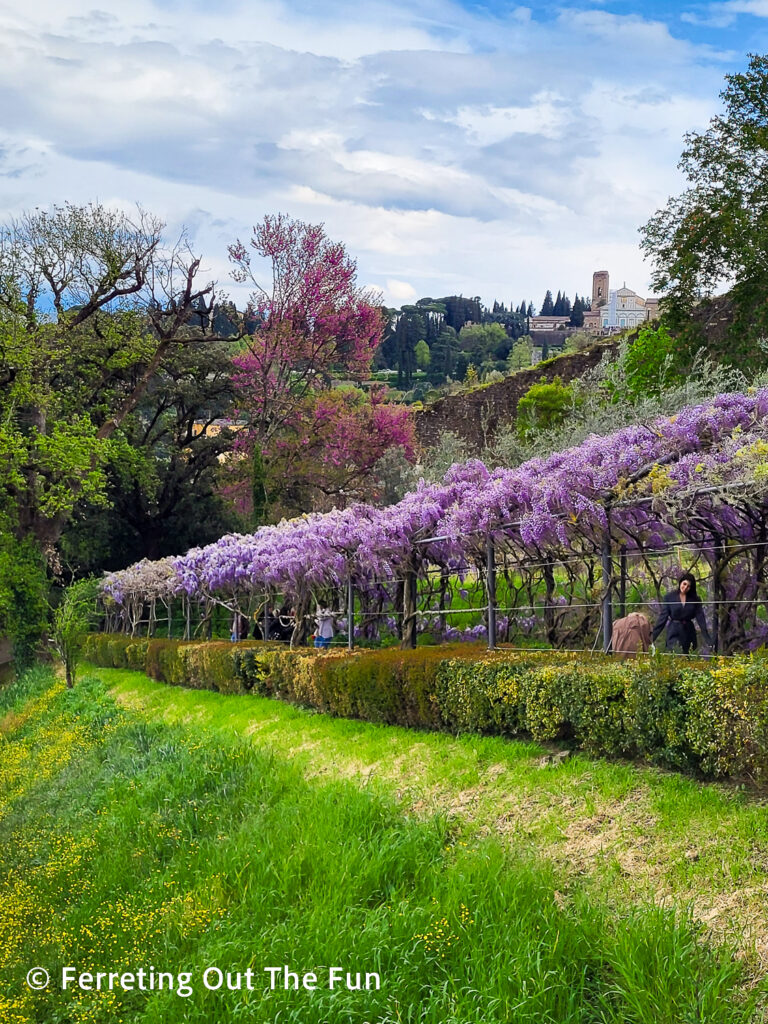
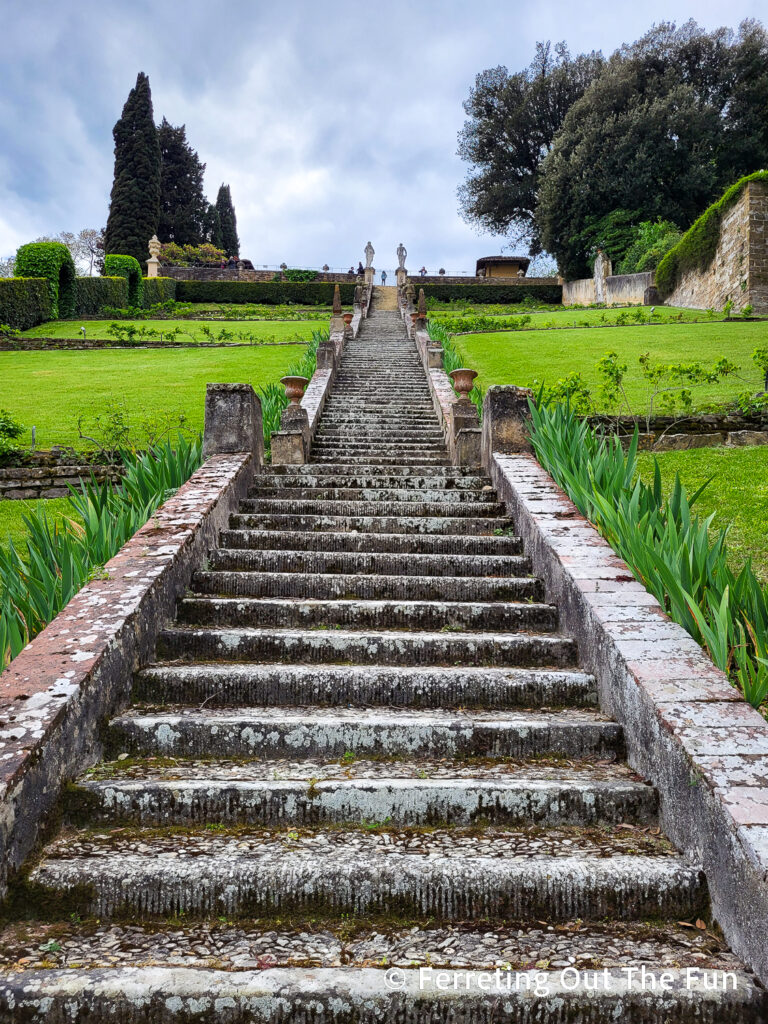
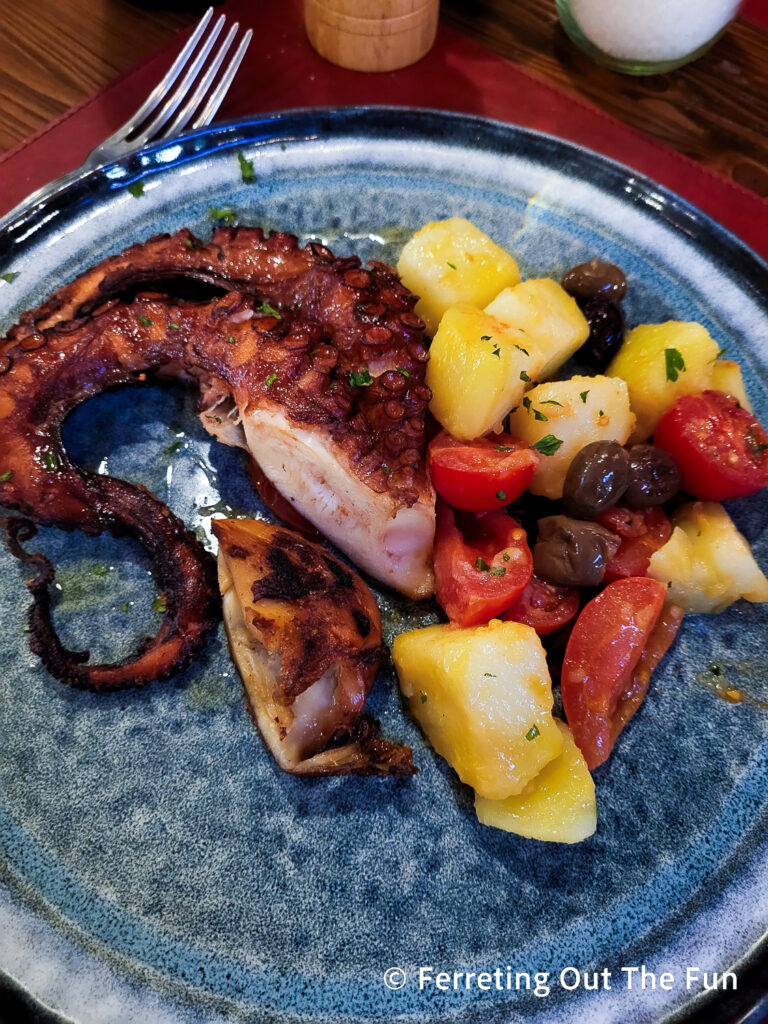
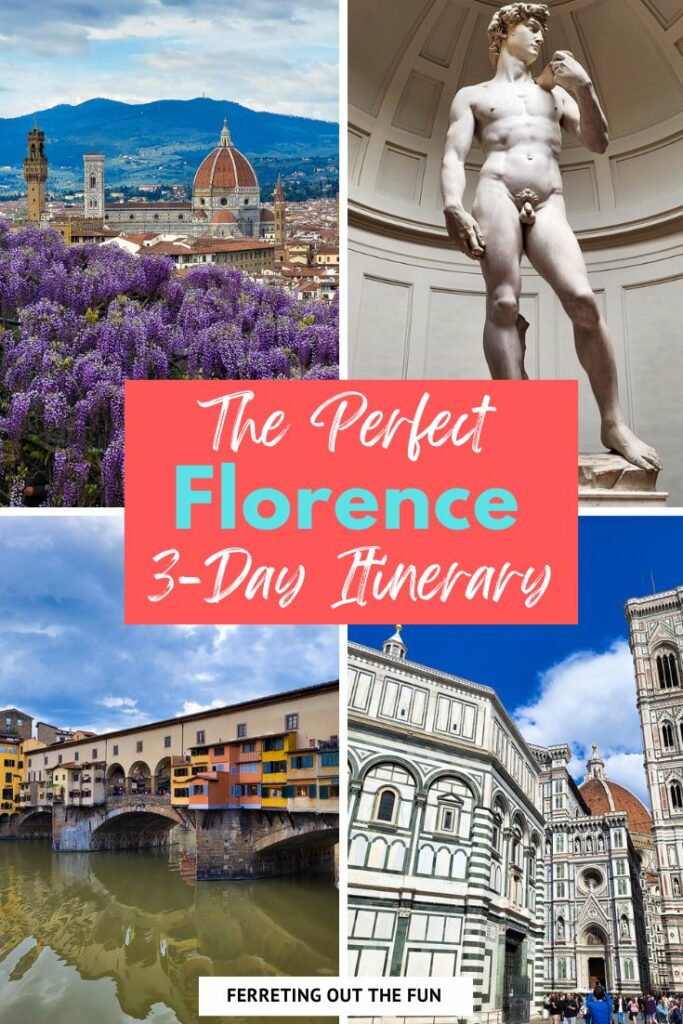
You sure covered a lot of attractions in three days. Loved all the pictures. So much history.
Three days wasn’t long enough!! I would love to go back!
Was there on June 2024. The next time I visit Florence I will plan it at a time to avoid the heat and crowds as much as possible.
I love Italy in October and April. Great weather and fewer crowds!